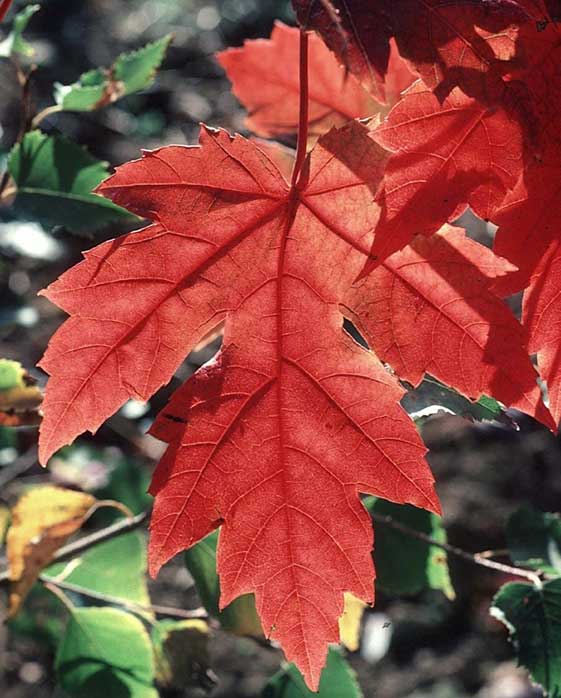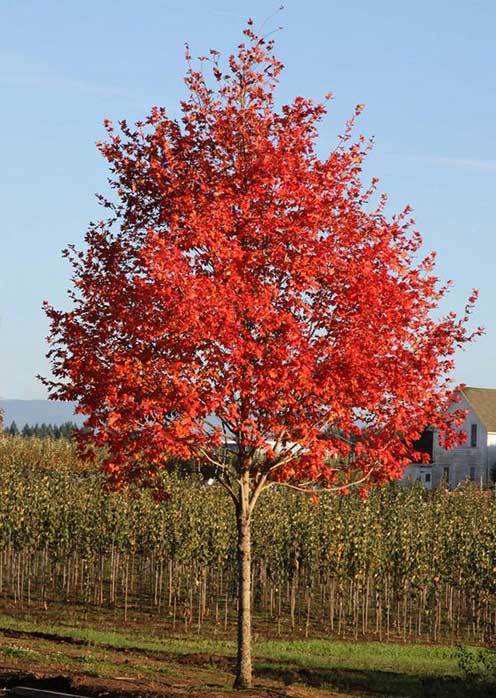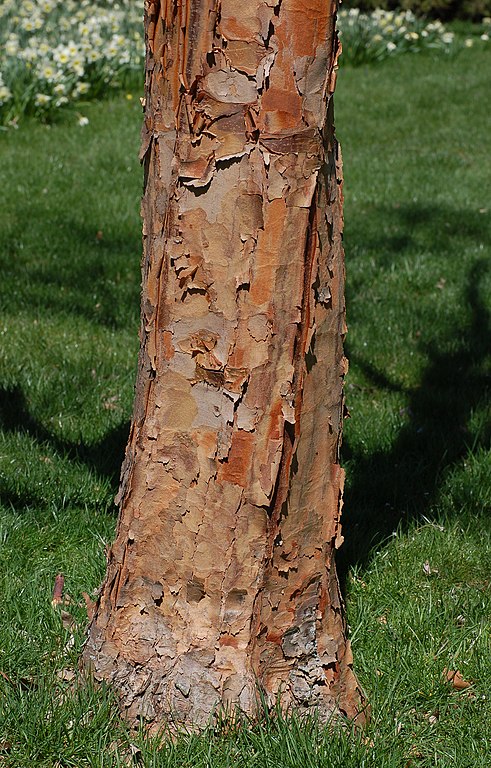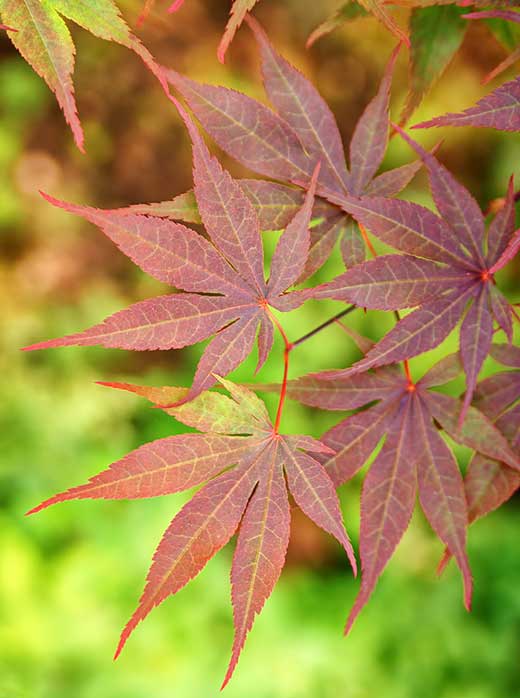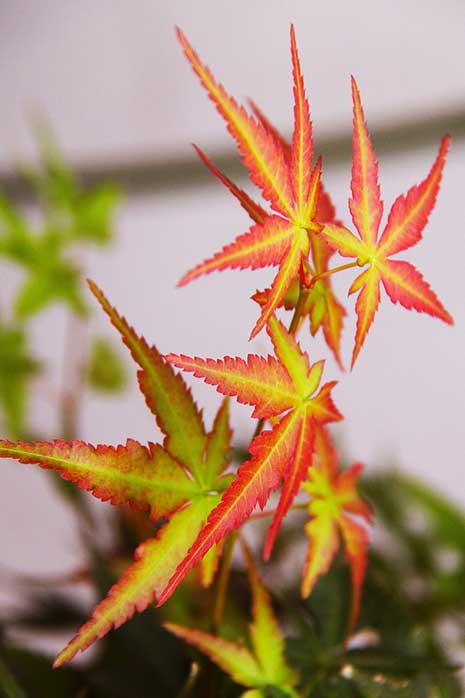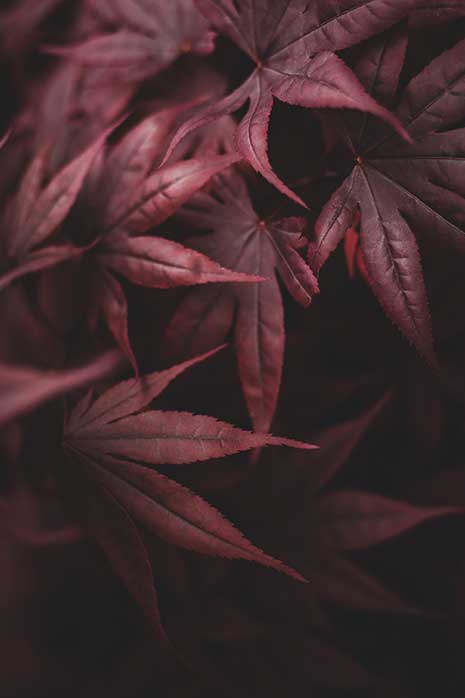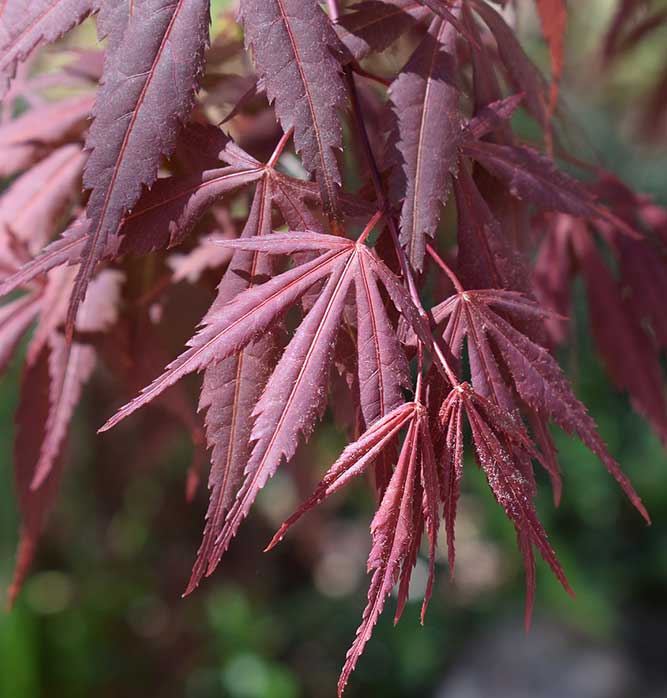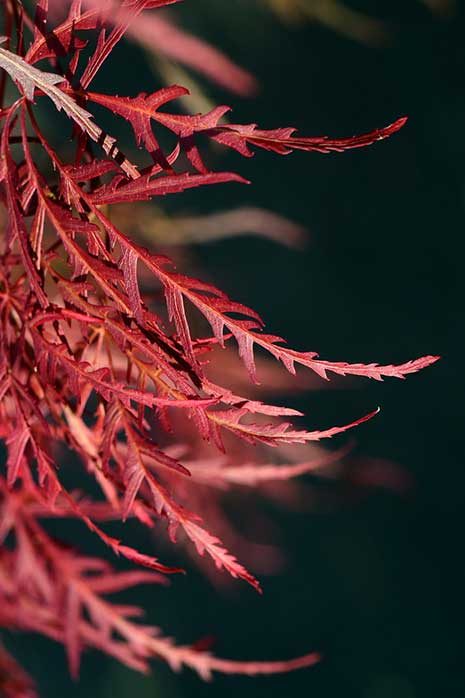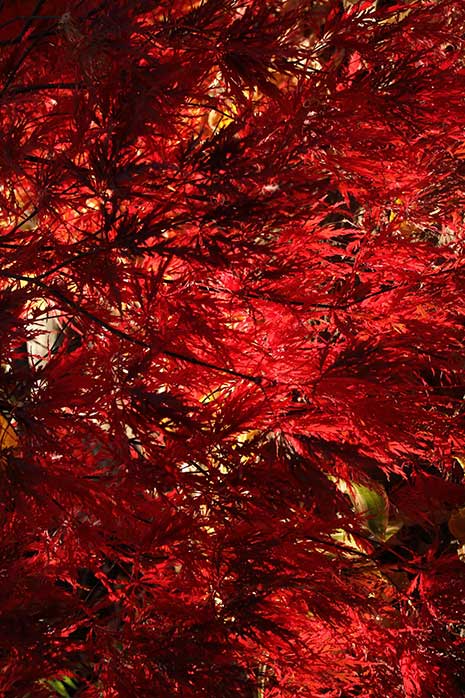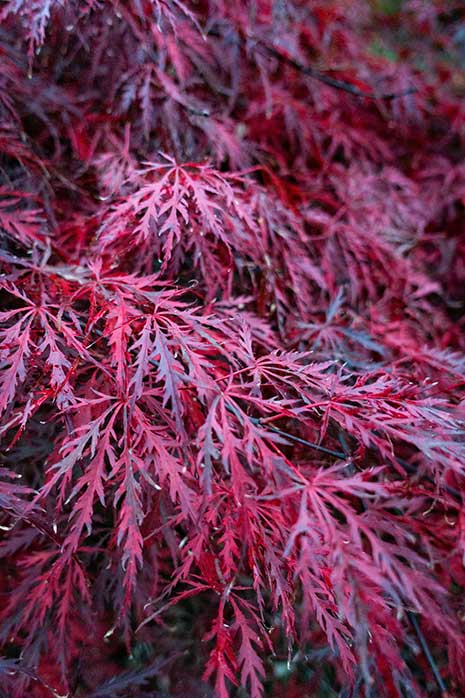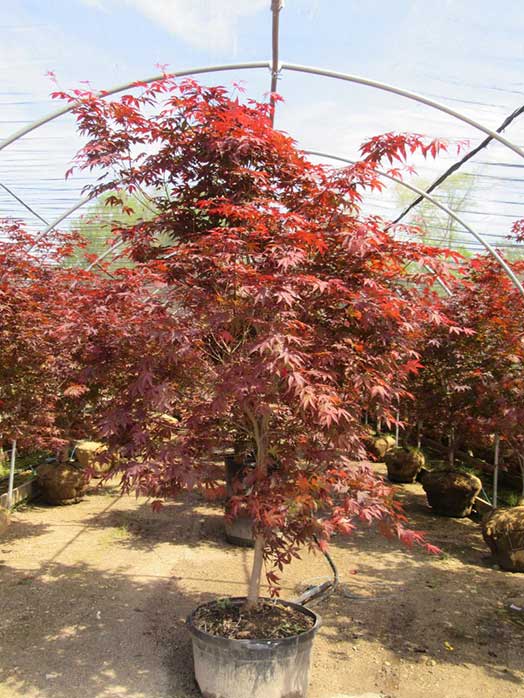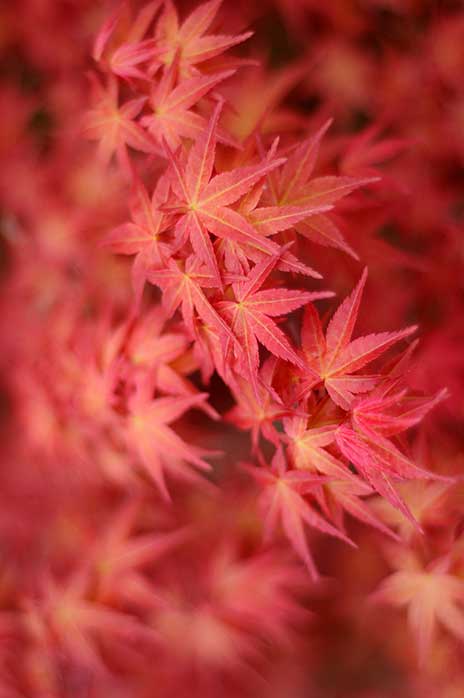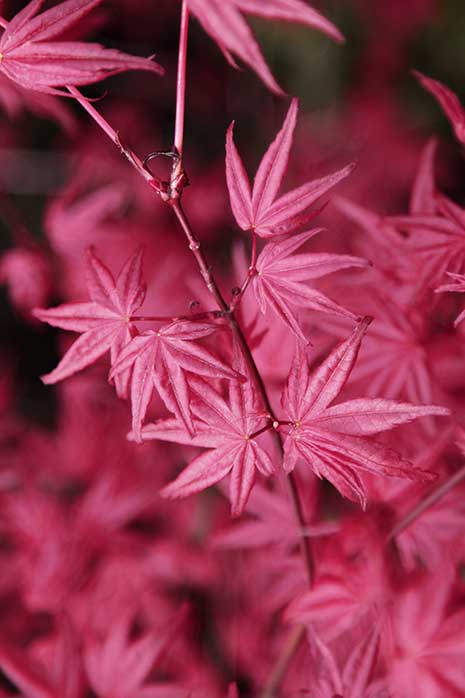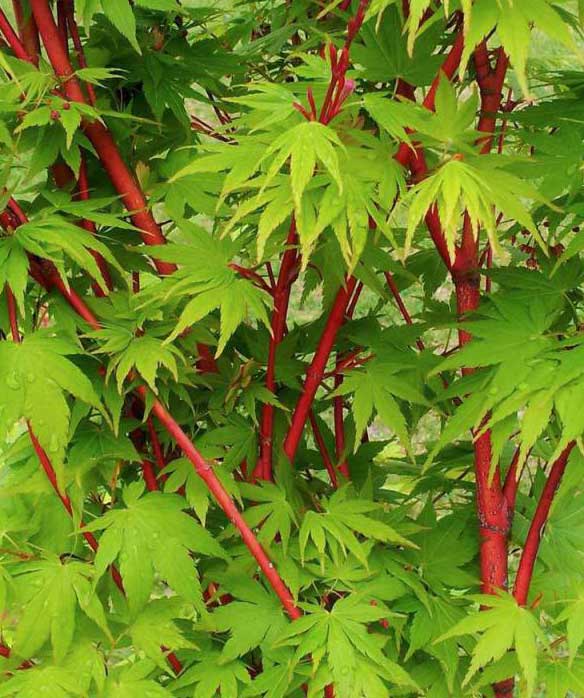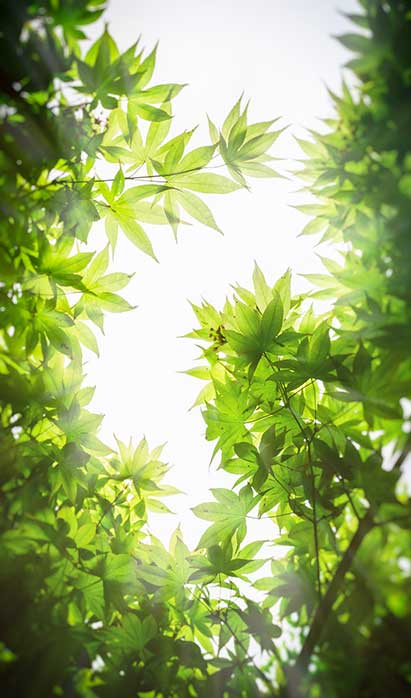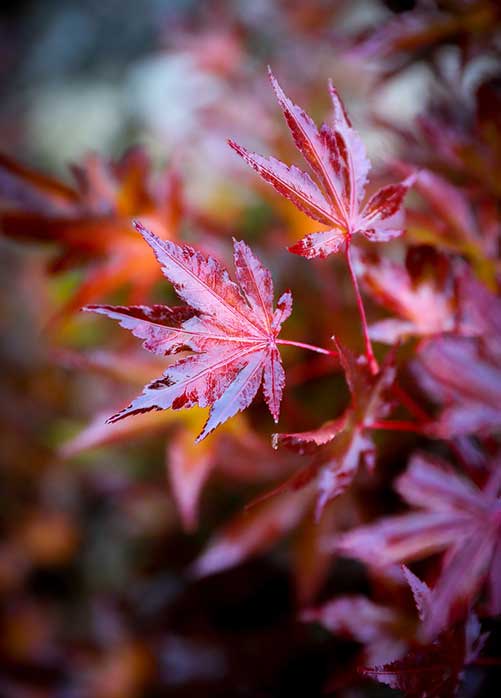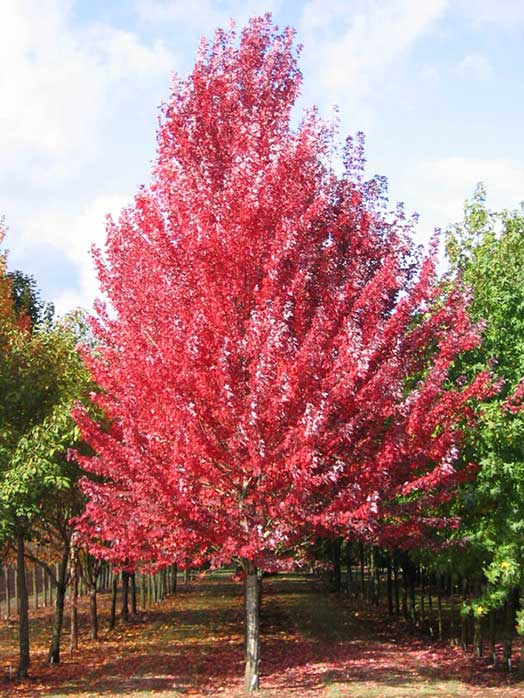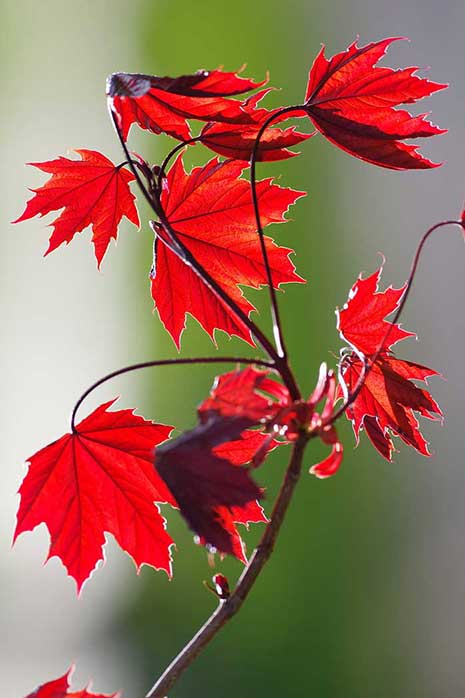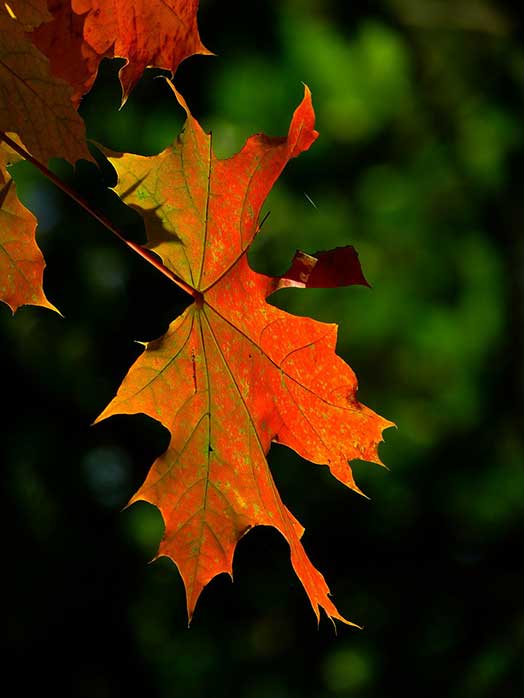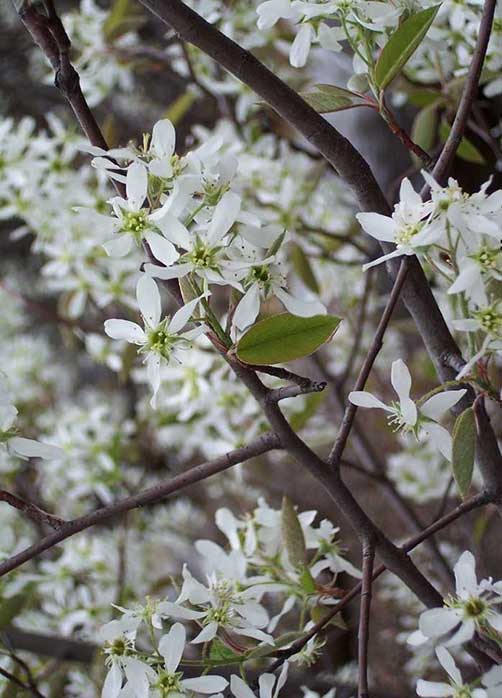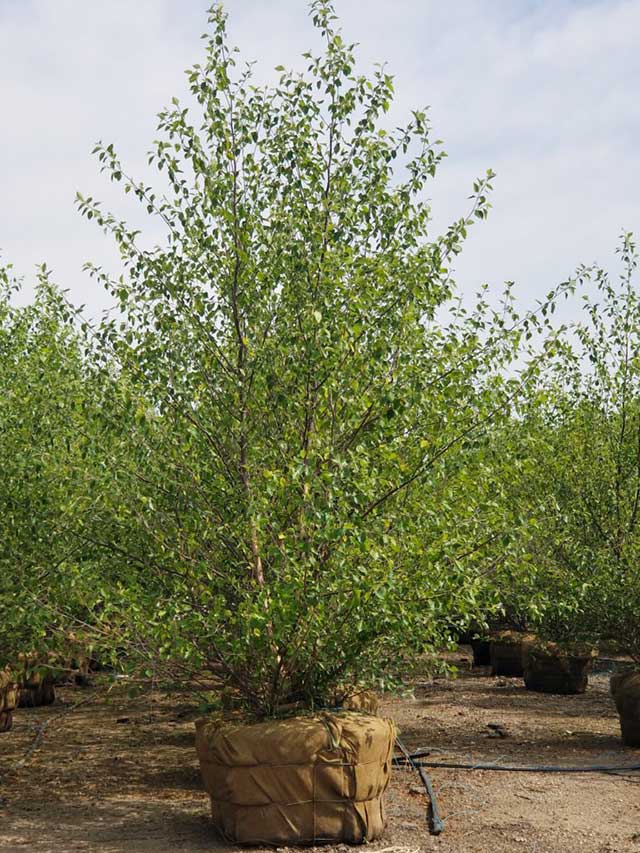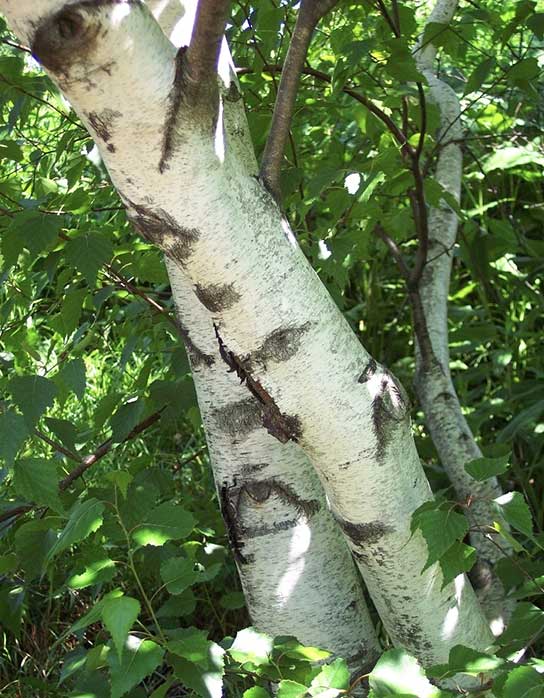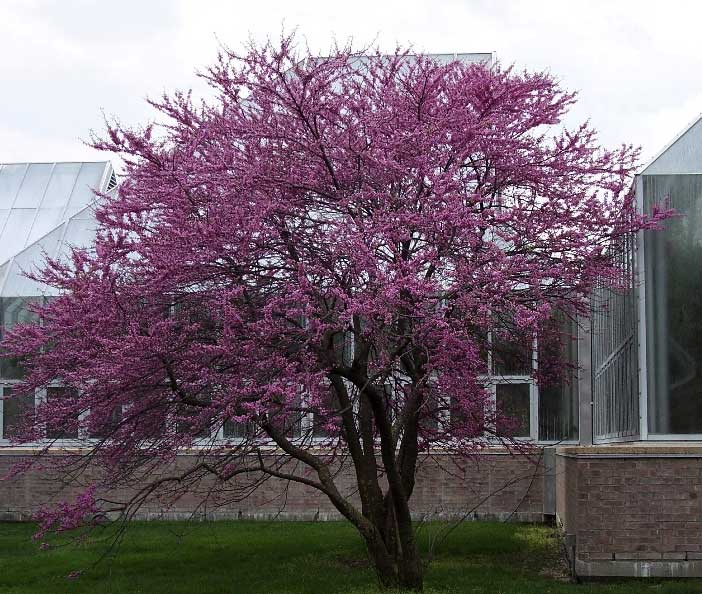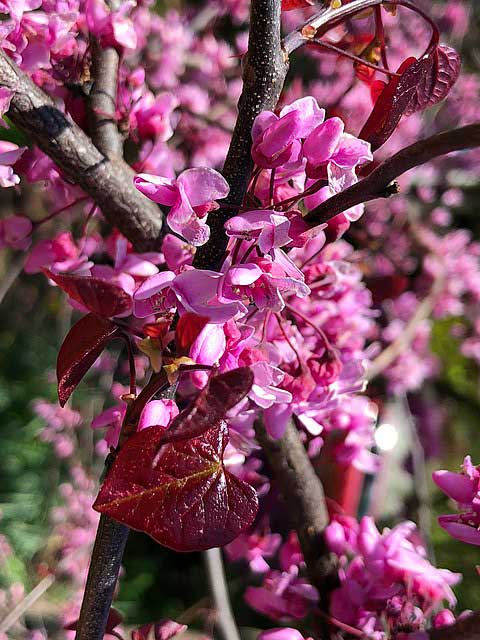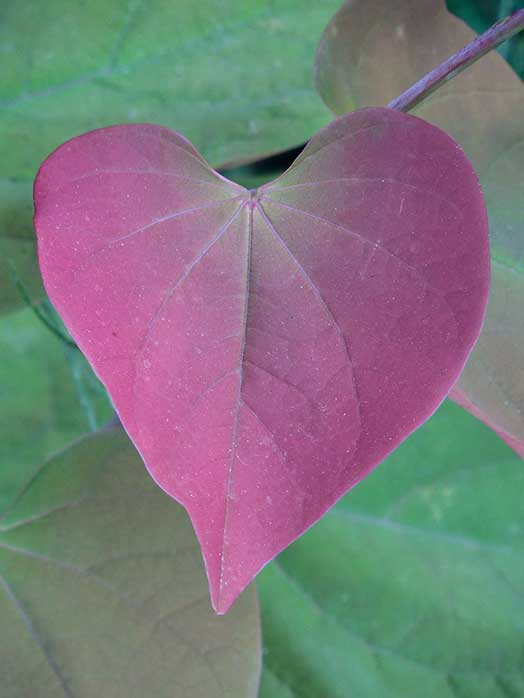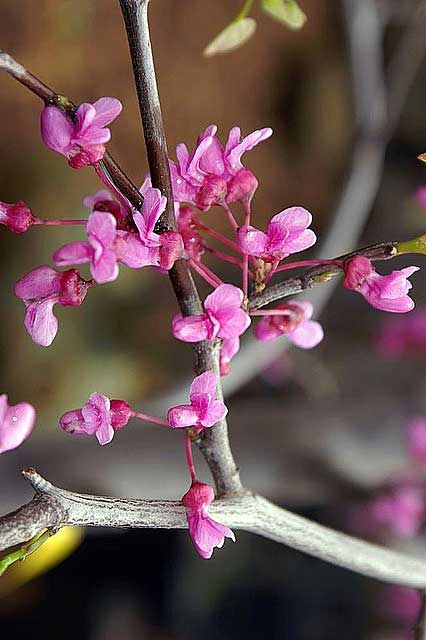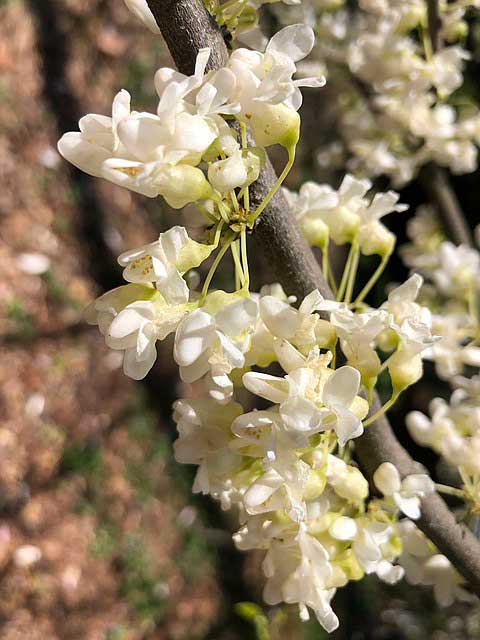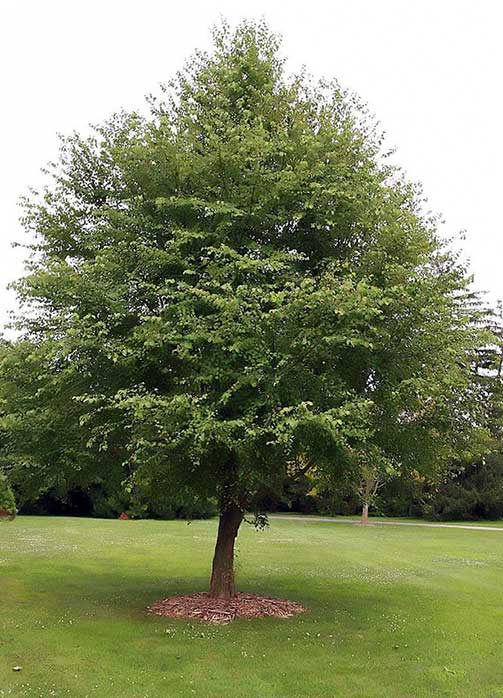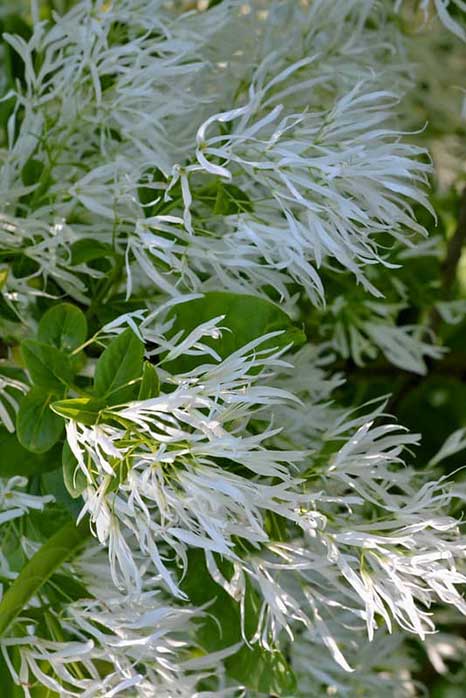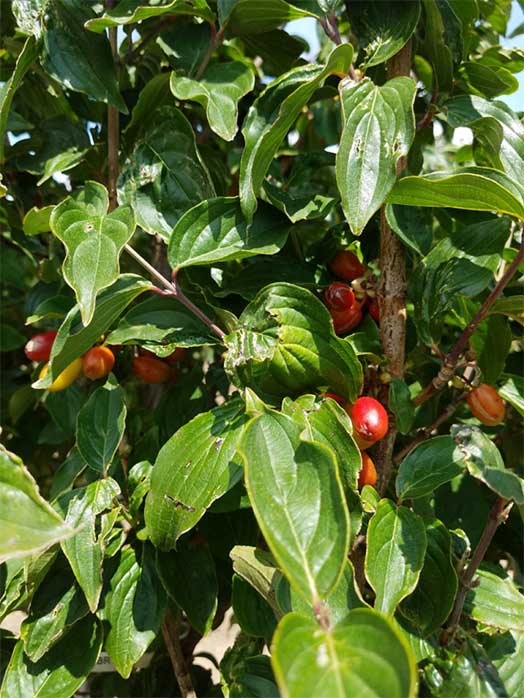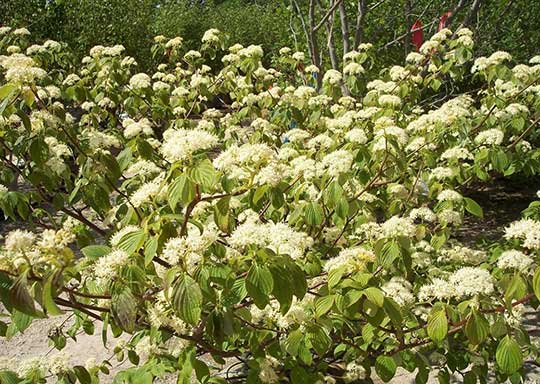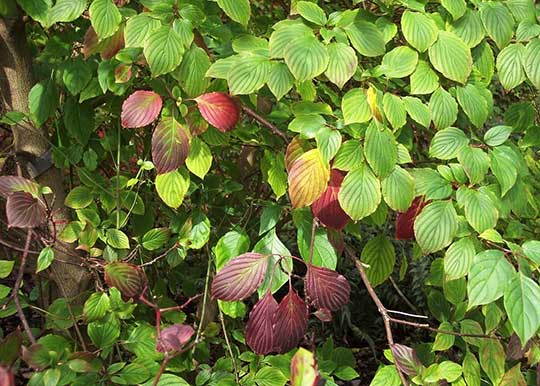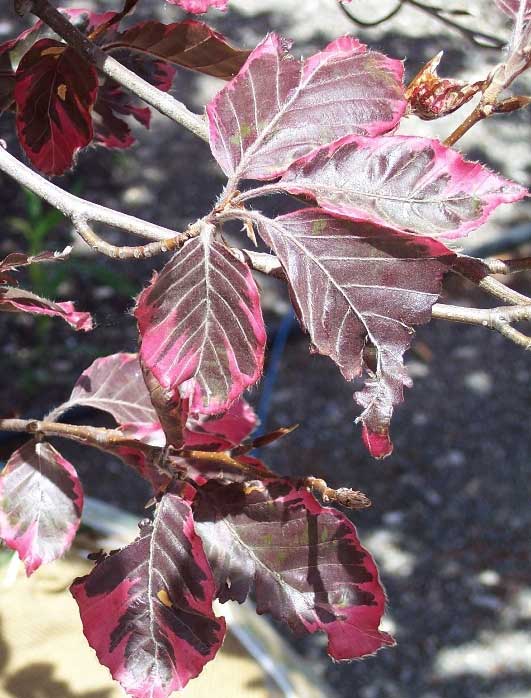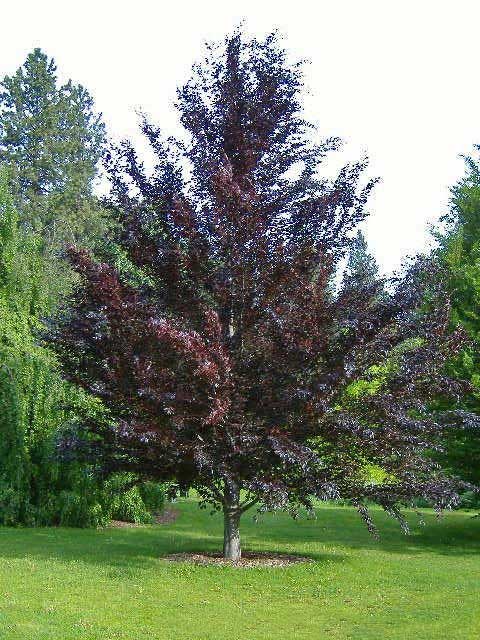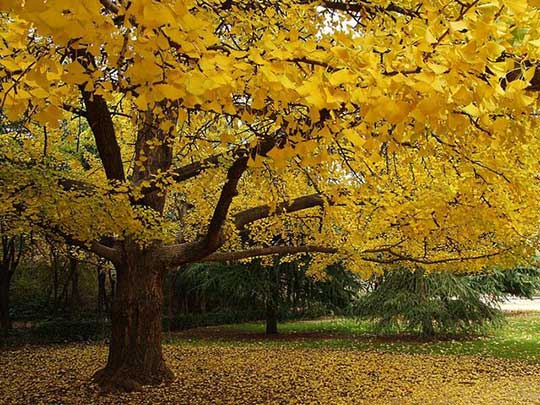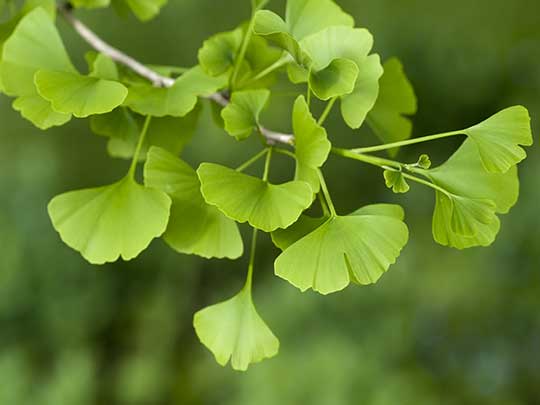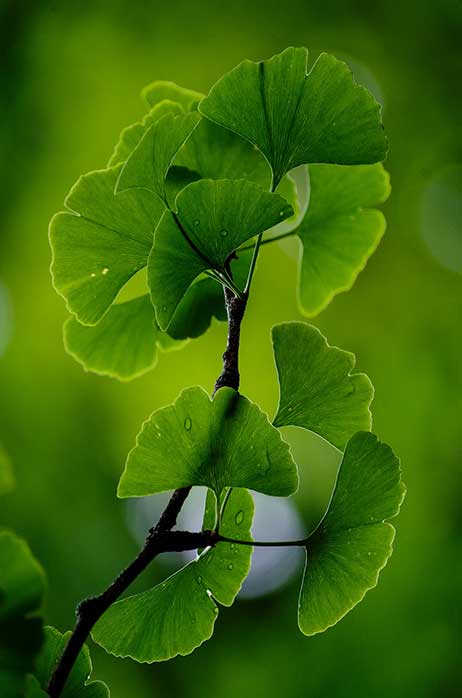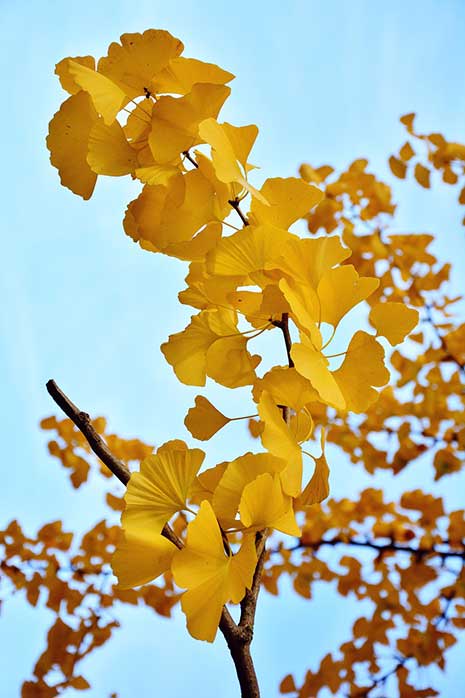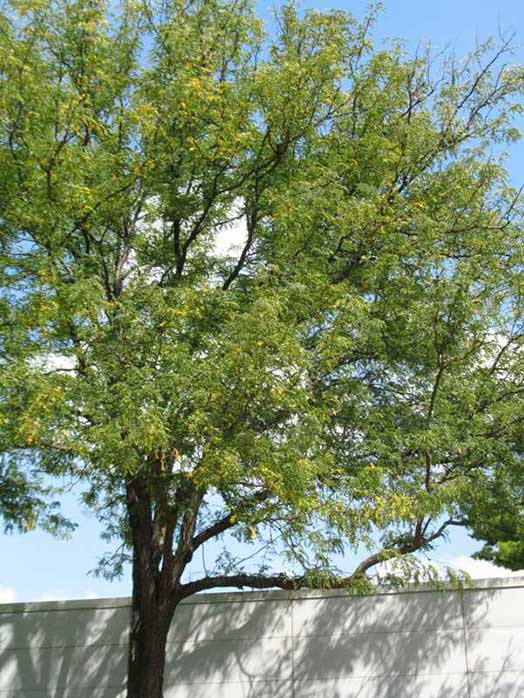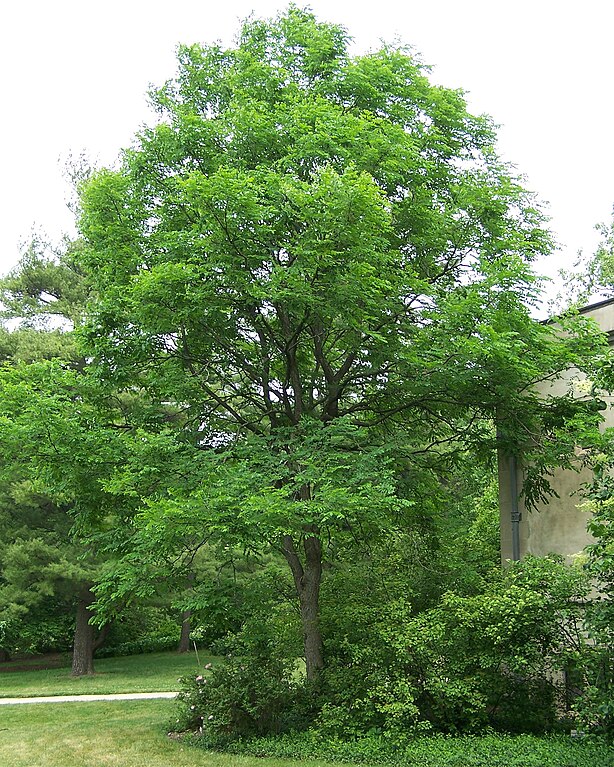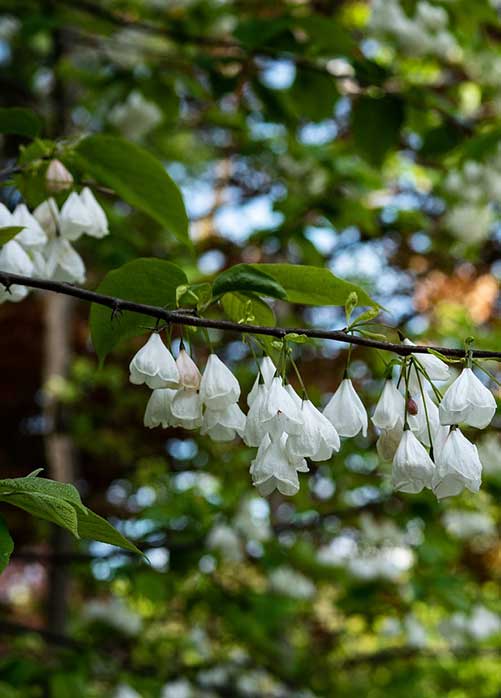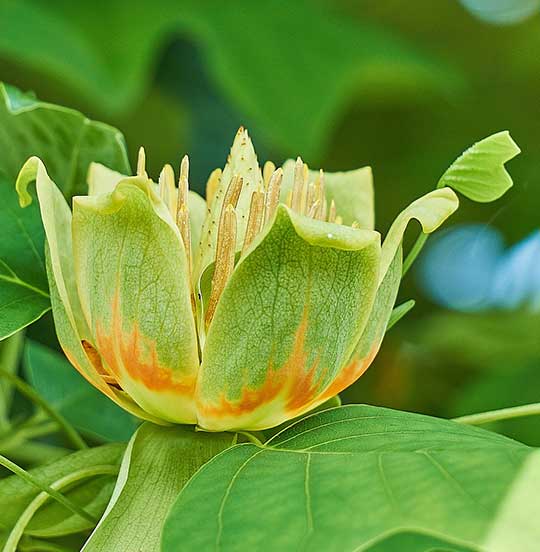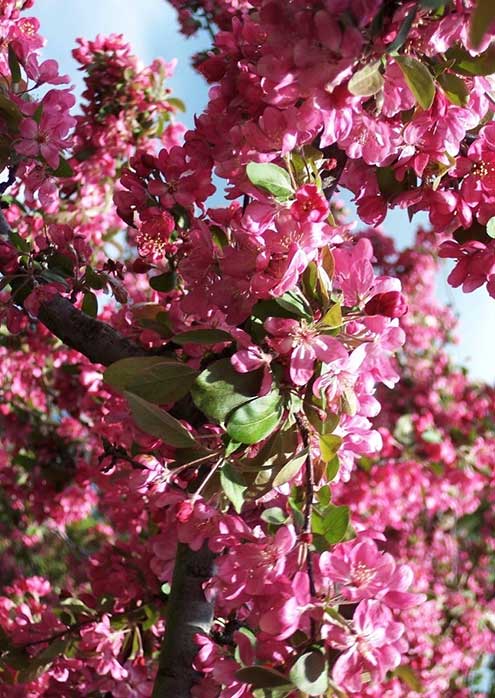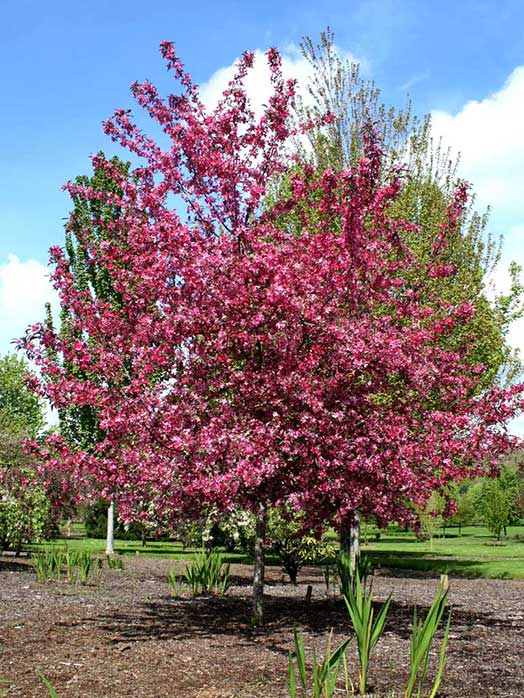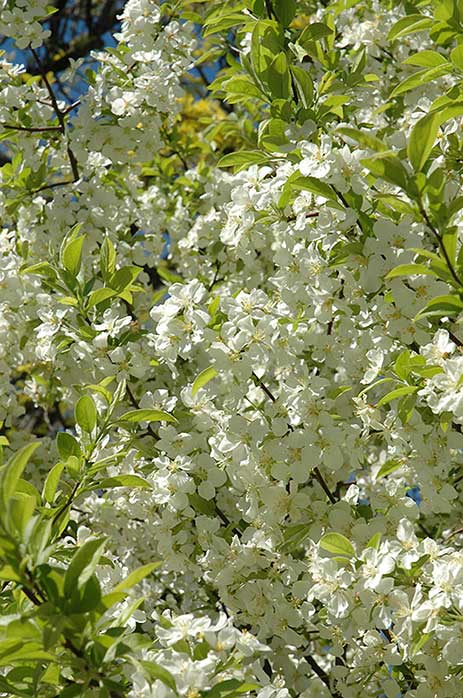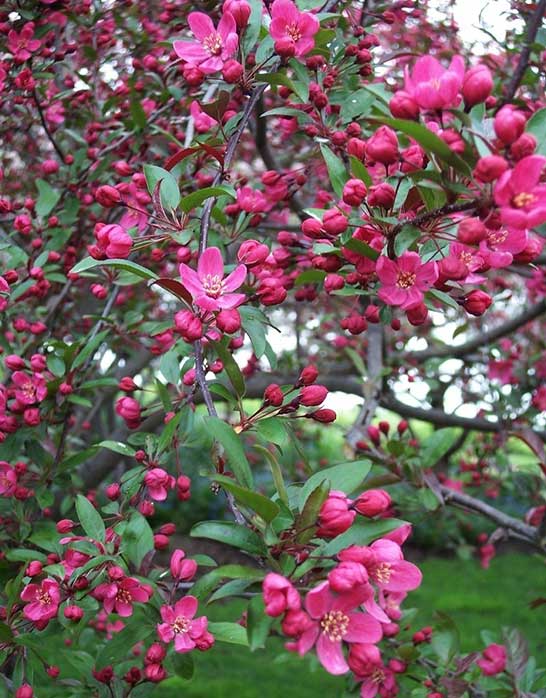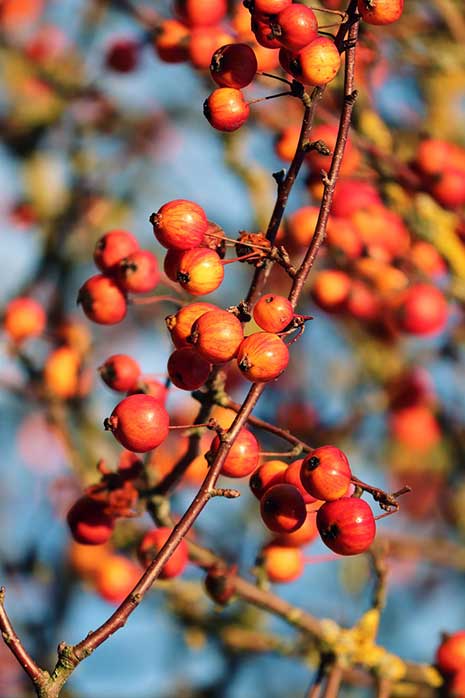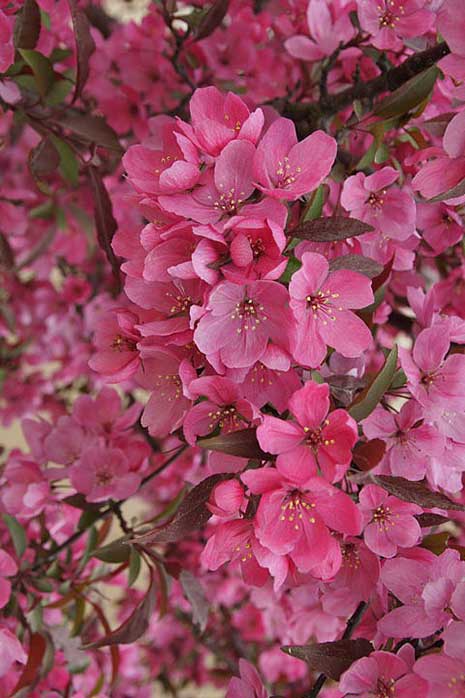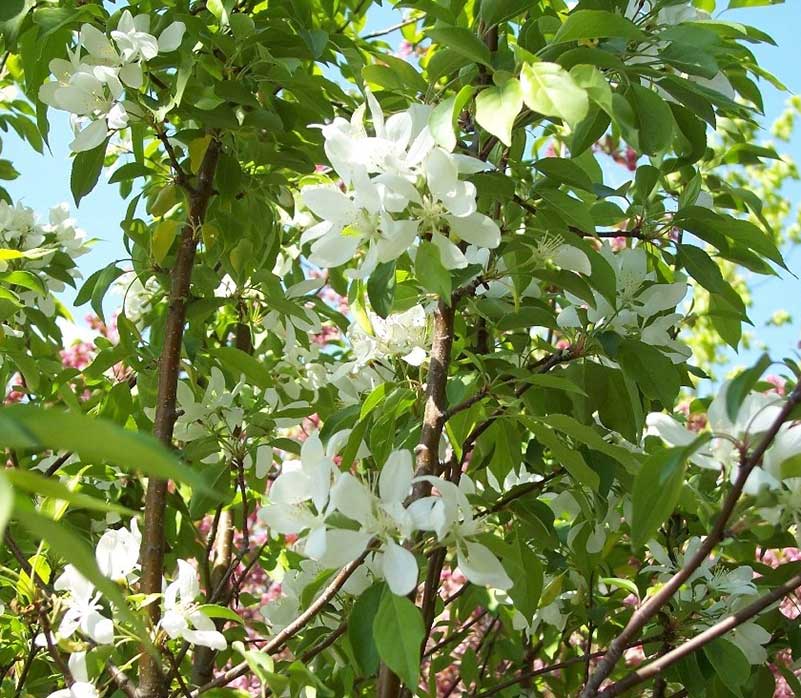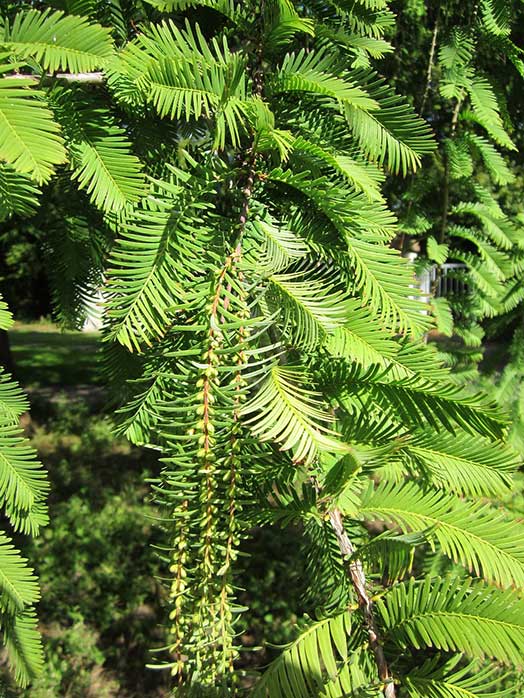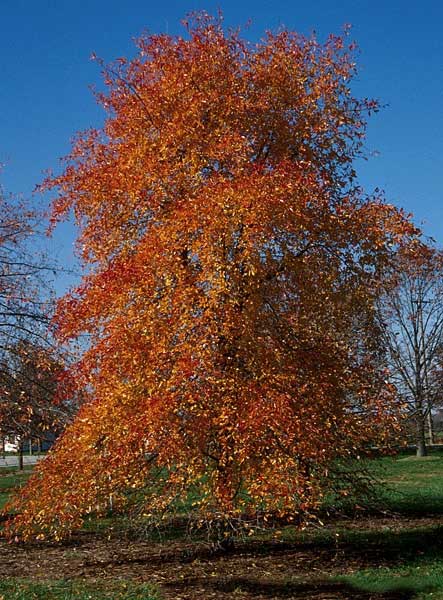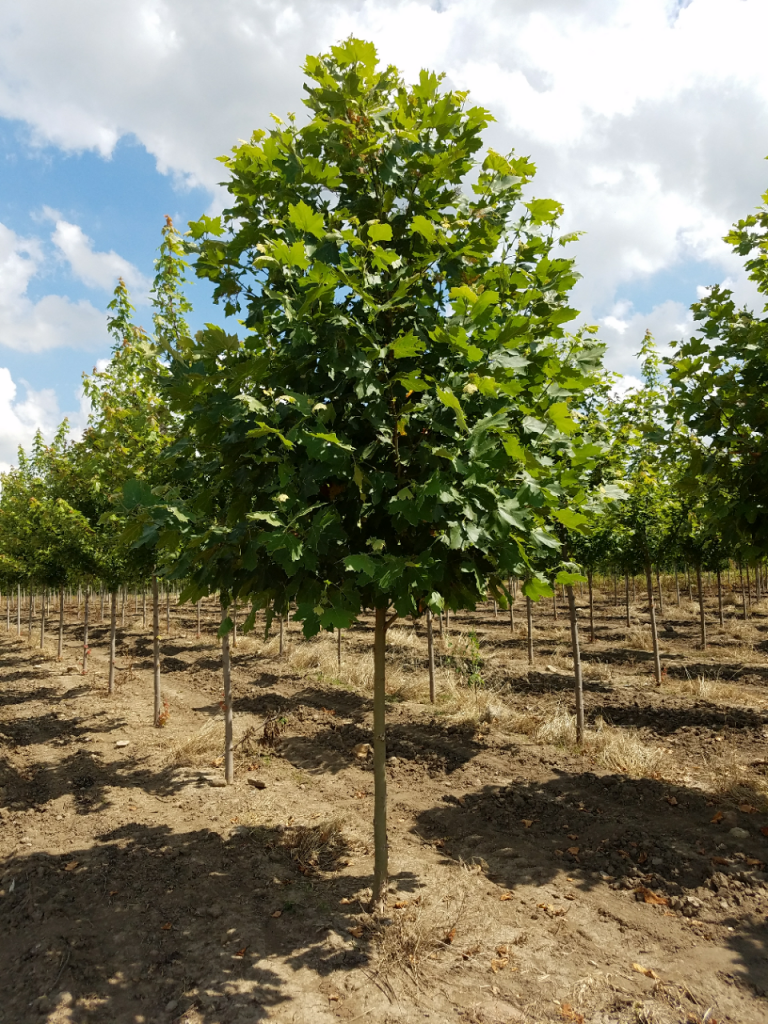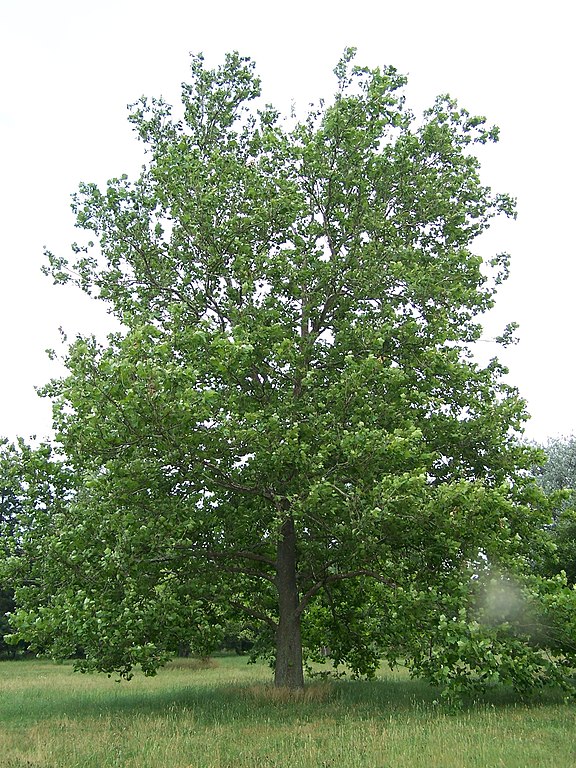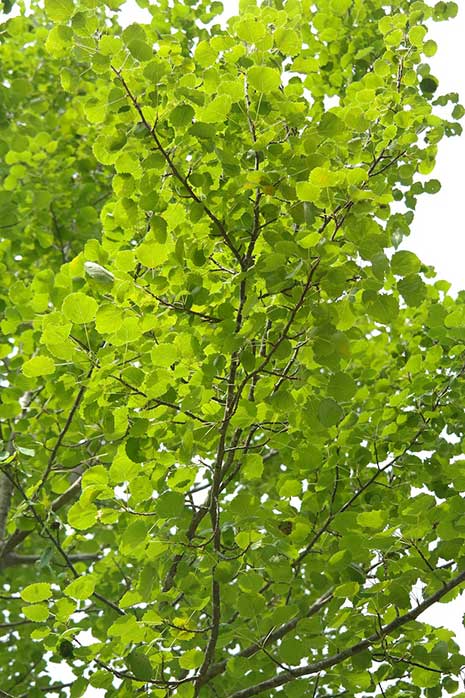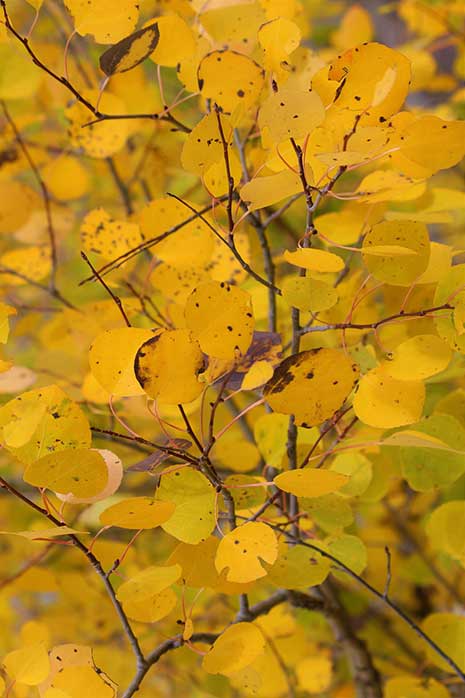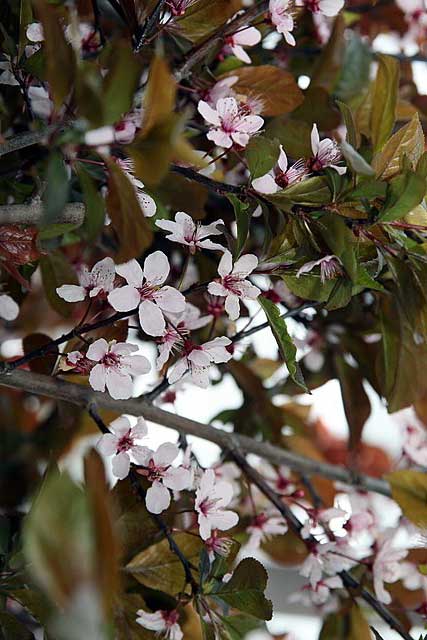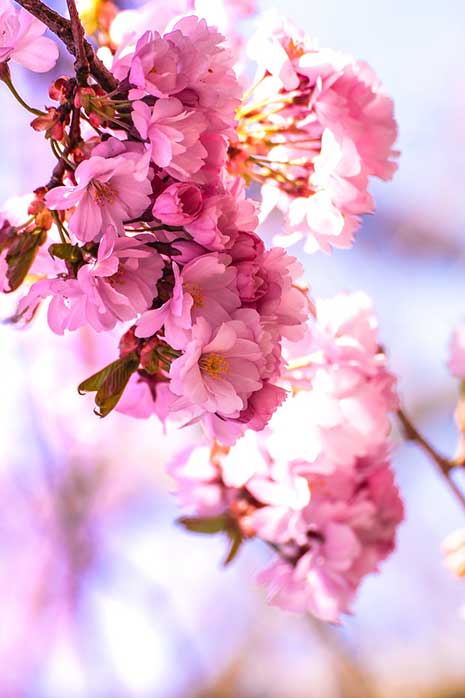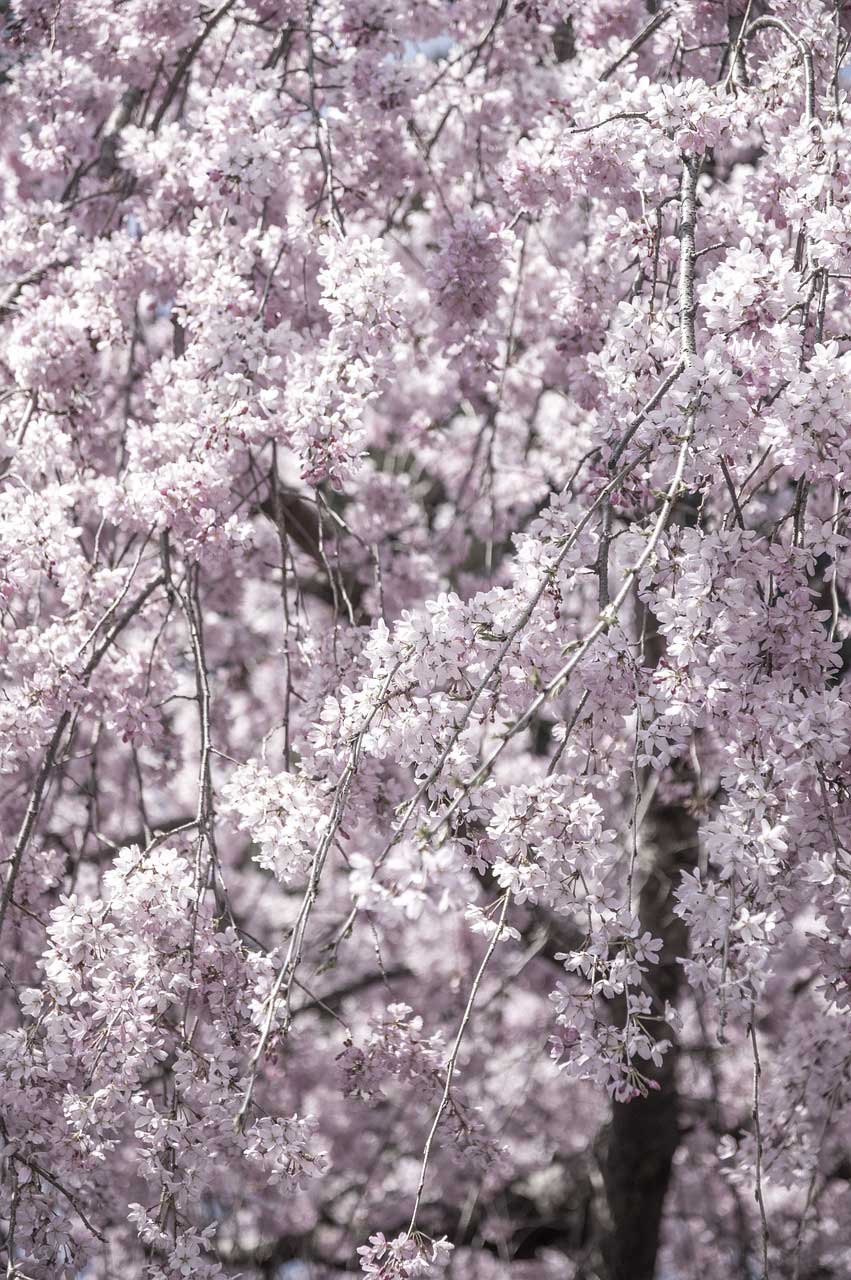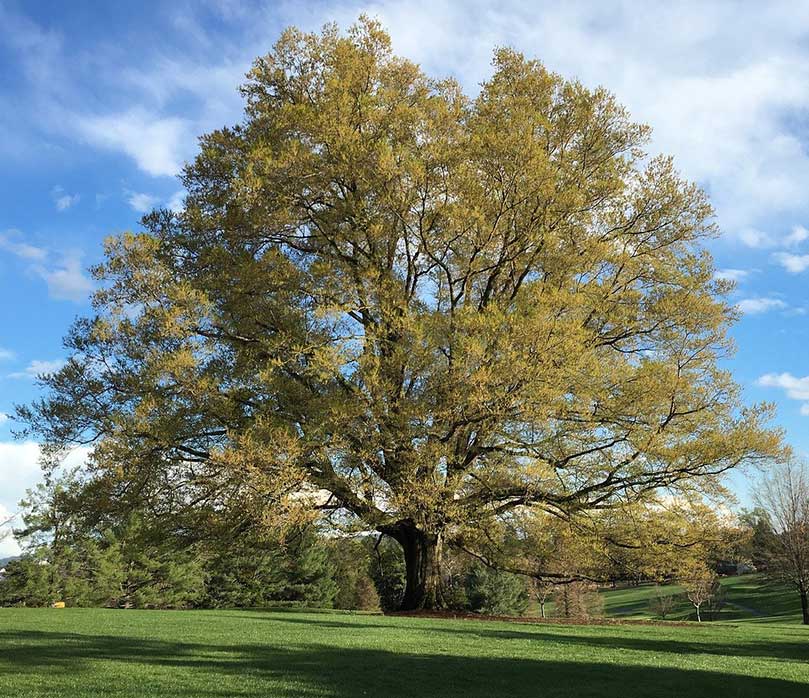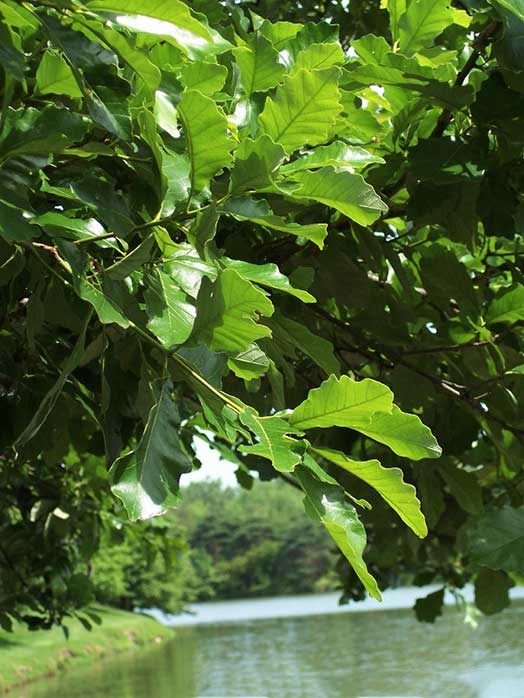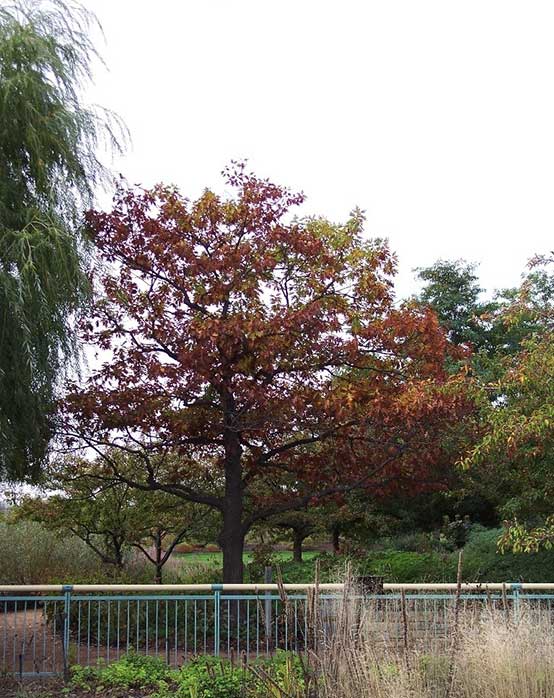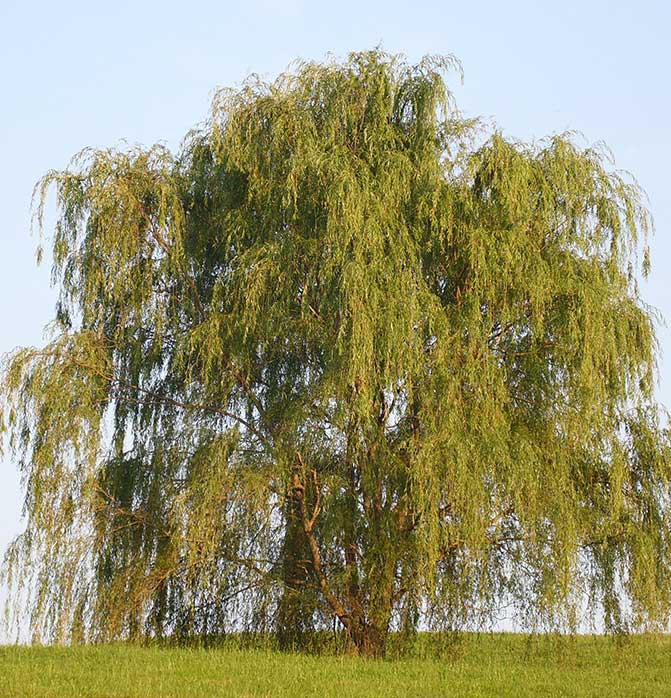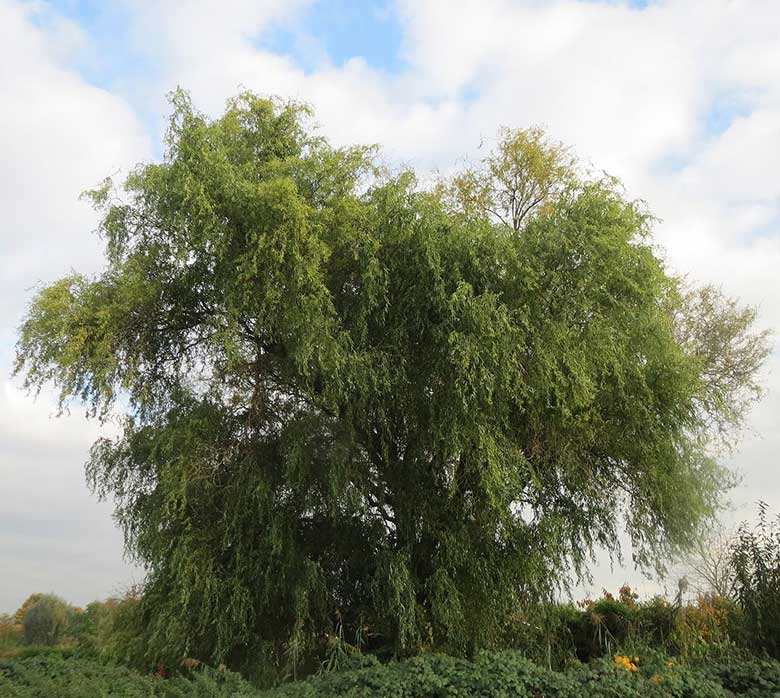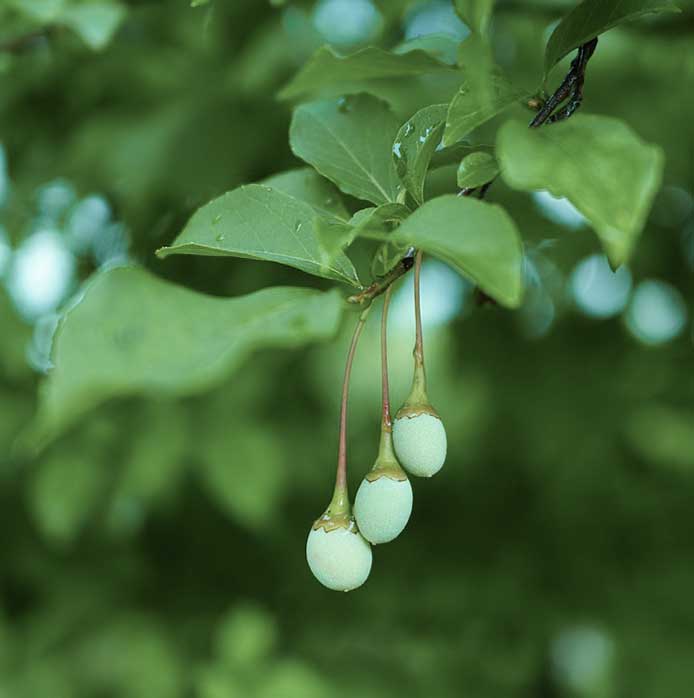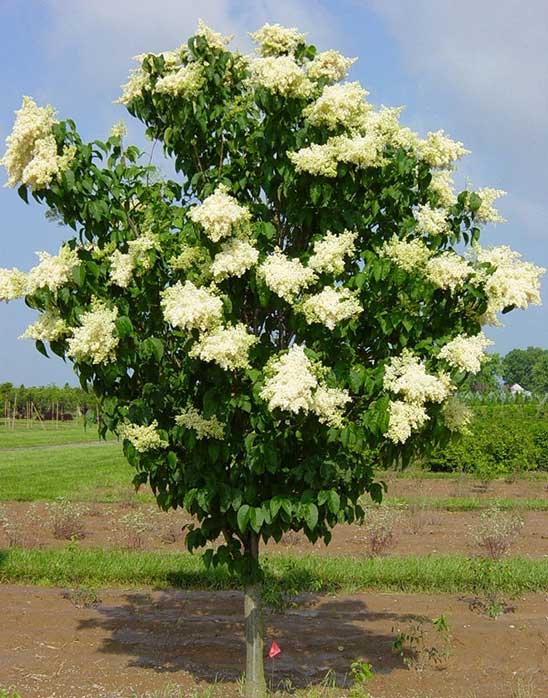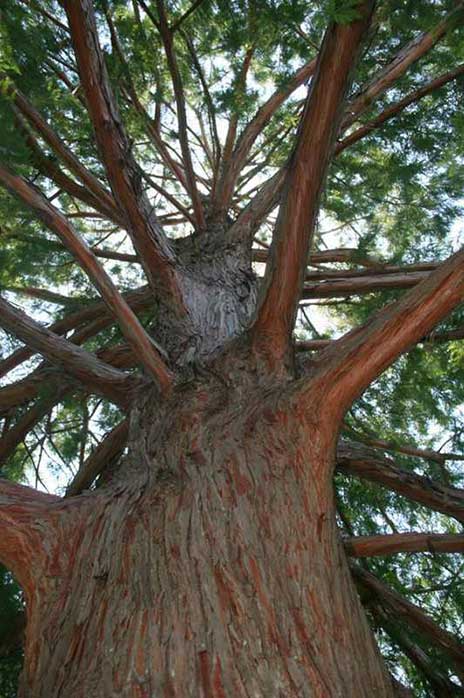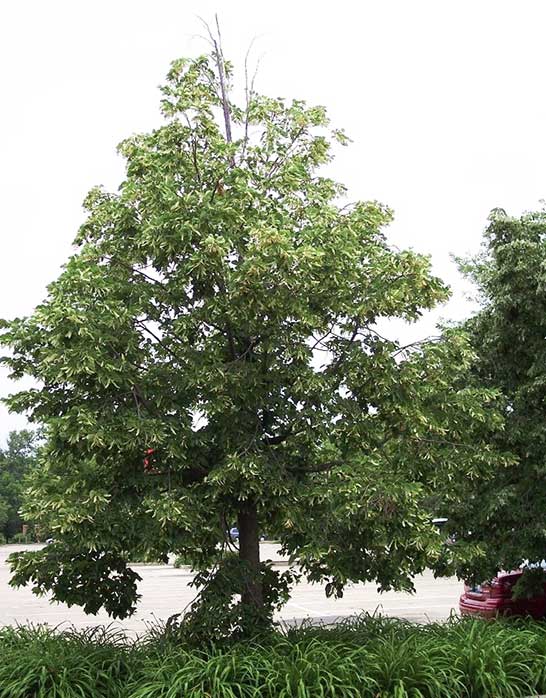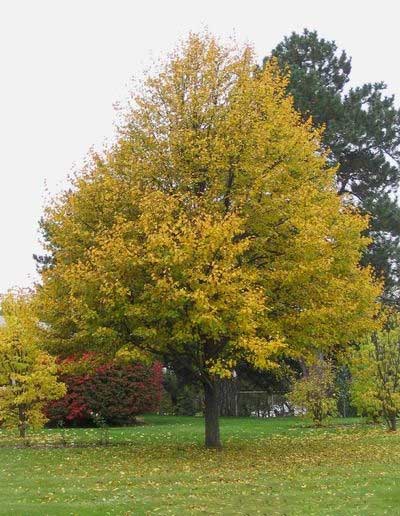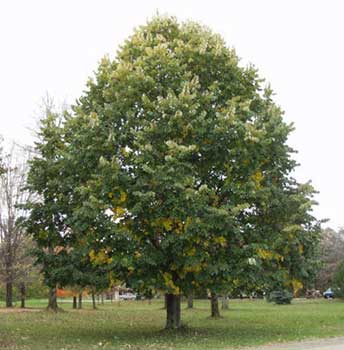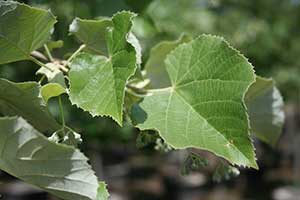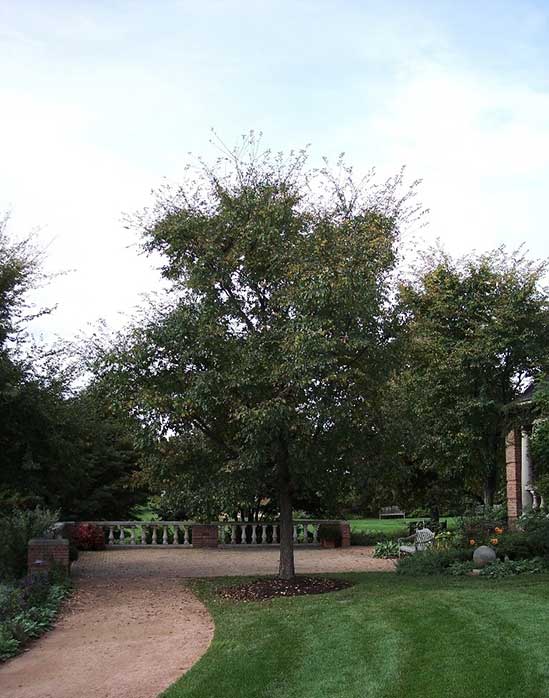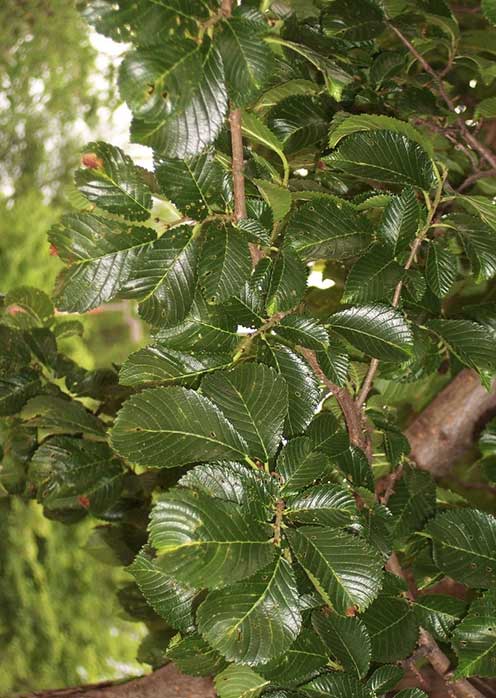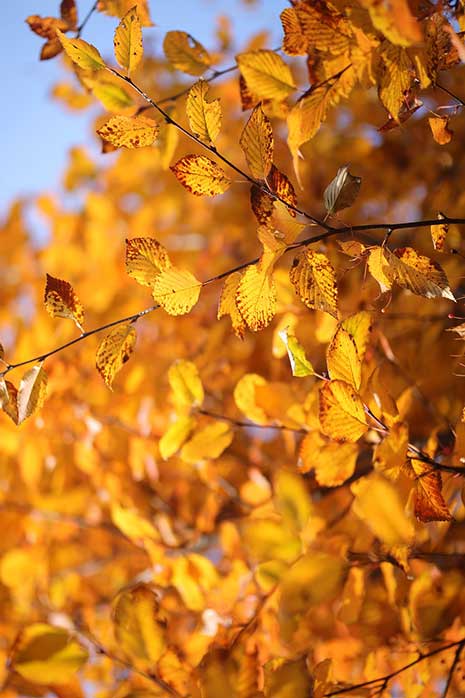trees
We have a great selection of trees for gardens and landscapes
Season opens from mid April – some tree varieties listed here might not be available when you visit the nursery.
We offer a delivery and planting service for trees – Contact Us for details.
To easily navigate this page: click on a common name below for direct scrolling
acer x. freemanii ‘jeffersred’
Autumn Blaze Maple
This fast growing maple is adapted to a wide range of soil conditions. Being pollution tolerant, it is great for urban environments and has good insect and disease resistance. Its shape is broadly ovate when mature and grows quickly. Fall foliage is exceptional. This variety is a hybrid of the silver maple tree.
These maples are tough and hardy – well adapted to our climate zone.
Height: 50′ – 60′
Width: 50′ – 60′
Exposure: Full sun.
Fruit / Flower: Samaras.
Fall Color: Red-orange.
Water: Keep well watered while young to establish a strong root system. Once established, these trees are drought tolerant.
Fertilizer: Use a nitrogen rich fertilizer three times a year when establishing.
Pruning: Prune in late winter or early spring. Regular pruning keeps these trees in shape and can prevent major limb breakage.
acer x. freemanii ‘sienna’
Sienna Glen Maple
Sienna Glen is an alternative to Autumn Blaze. It branches densely and has a uniform pyramidal shape and strong central leader (apical dominance). This is a low maintenance tree and is excellent for tough sites. It is tolerant of drought, salt, and flooding.
Height: 40′ – 50′
Width: 35′ – 40′
Exposure: Full sun.
Fruit / Flower: Few samaras (less than Autumn Blaze).
Fall Color: Yellow-orange to burgundy red.
Water: Keep well watered while young ( one to 2 years) to establish a strong root system. Once established, these trees are drought tolerant.
Fertilizer: Use a nitrogen rich fertilizer three times a year when establishing.
Pruning: Prune in late winter or early spring. Regular pruning keeps these trees in shape and can prevent major limb breakage.
acer griseum
Paperbark Maple
Height: 20′ – 25′ (slow grower)
Width: 15′ – 20′
Exposure: Full sun.
Fruit / Flower: Samaras
Fall Color: Scarlet.
Water: Keep well watered while young ( one to 2 years) to establish a strong root system.
Fertilizer: Use a nitrogen rich fertilizer three times a year when establishing.
Pruning: Prune in late winter or early spring. Regular pruning keeps these trees in shape and can prevent major limb breakage.
Photo by and (c)2007 Derek Ramsey (Ram-Man). Location credit to the Chanticleer Garden., CC BY-SA 3.0
acer palmatum ‘adrian’s compact’
Japanese Maple – Adrian’s Compact
This little Japanese Maple grows to about 5 foot tall and three foot wide after 10 years. New leaves start out as bright red turning scarlet and orange in the fall. They are particularly well suited to small gardens and accents in bedding foregrounds. They grow best if protected from the scorching summer sun.
Height: 4′ – 6′ after 10 years.
Width: 3′ – 5′
Exposure: Full sun to part shade (protect from hot afternoon sun).
Fall Color: Scarlet-orange.
Water: Water regularly in rich well drained soil. Use mulch for moisture retention. Do not let them dry out especially while the tree is being established.
Fertilizer: Use a slow release fertilizer. Be careful not to over-fertilize resulting in burned-out shriveled leaves.
Pruning: Prune lightly to shape, removing crossed and rubbing branches. Excessive pruning, especially in the summer heat, can damage the branches.
This little maple is often used as bonsai and can be pruned in those styles.
acer palmatum ‘ariadne’
Japanese Maple – Ariadne
This variety is a reticulated Maple, meaning it has variegated leaves with green veins which are particularly noticeable in spring. The variegated structure tends to fade from late summer onwards. Ariadne spring leaves emerge orange pink becoming a deep maroon. It ages to a show of orange and red in the fall.
Height: 7′ – 10′.
Width: 5′ – 8′
Exposure: Morning sun to part shade (protect from hot afternoon sun).
Fall Color: Orange-red.
Water: Water regularly in rich well drained soil. Use mulch for moisture retention. Do not let them dry out especially while the tree is being established.
Fertilizer: Use a slow release fertilizer. Be careful not to over-fertilize resulting in burned-out shriveled leaves.
Pruning: Prune lightly to shape, removing crossed and rubbing branches. Excessive pruning, especially in the summer heat, can damage the branches.
acer palmatum ‘bloodgood’
Japanese Maple – Bloodgood
Bloodgood has burgundy red leaves which turn brilliant scarlet in fall. This is a hardy Japanese Maple and has good sun tolerance. This is well suited for a highly visible area and looks great amongst grasses.
It will look stunning in an Asian style garden setting with stones around it.
Height: 15′ – 20′.
Width: 10′ – 15′
Exposure: Morning sun to part shade. Can take full sun better than most Japanese maples.
Fall Color: Red-crimson.
Water: Water regularly in rich well drained soil. Use mulch for moisture retention. Do not let them dry out especially while the tree is being established.
Fertilizer: Use a slow release fertilizer. Be careful not to over-fertilize resulting in burned-out shriveled leaves.
Pruning: Prune lightly to shape, removing crossed and rubbing branches. Excessive pruning, especially in the summer heat, can damage the branches.
acer palmatum dissectum ‘crimson queen’
Japanese Maple – Crimson Queen
This dissectum variety has long palmate leaves. The deeply incised lobes are cut into the base of the leaf. These are commonly called laceleaf Japanese maple or cutleaf Japanese Maple. Crimson Queen is a popular variety maintaining its leaf color throughout the season. It has a beautiful spreading cascading branch structure.
Height: 8′ – 12′.
Width: 10′ – 12′
Exposure: Morning sun to part shade (protect from hot afternoon sun).
Fall Color: Crimson-orange-red.
Water: Water regularly in rich well drained soil. Use mulch for moisture retention. Do not let them dry out especially while the tree is being established.
Fertilizer: Use a slow release fertilizer. Be careful not to over-fertilize resulting in burned-out shriveled leaves.
Pruning: Prune lightly to shape, removing crossed and rubbing branches. Excessive pruning, especially in the summer heat, can damage the branches.
acer palmatum dissectum ‘garnet’
Japanese Maple – Garnet
This charming laceleaf Maple has a weeping rounded habit. It is a slow grower, prized for its foliage. Garnet is perfect as a specimen plant in small gardens, rock gardens and containers. Deeply cut leaves emerge red-orange holding its color into summer before turning red in fall.
They work well in beds, small yards, patios, and containers.
Height: 6′ – 8′.
Width: 8′ – 12′
Exposure: Morning sun to part shade (protect from hot afternoon sun).
Fall Color: Crimson-orange-red.
Water: Water regularly in rich well drained soil. Use mulch for moisture retention. Do not let them dry out especially while the tree is being established.
Fertilizer: Use a slow release fertilizer. Be careful not to over-fertilize resulting in burned-out shriveled leaves.
Pruning: Prune lightly to shape, removing crossed and rubbing branches. Excessive pruning, especially in the summer heat, can damage the branches.
acer palmatum dissectum ‘jeddeloh orange’
Japanese Maple – Jeddeloh Orange
The Jeddeloh Orange is a beautiful small specimen maple. It has a low branching weeping form and finely textured laceleaf foliage. The leaves start out as red-orange and mature to green then transforming to brilliant shades of gold and orange in the fall.
Height: 7′ – 8′.
Width: 5′ – 6′
Exposure: Morning sun to part shade (protect from hot afternoon sun).
Fall Color: Gold-orange.
Water: Water regularly in rich well drained soil. Use mulch for moisture retention. Do not let them dry out especially while the tree is being established.
Fertilizer: Use a slow release fertilizer. Be careful not to over-fertilize resulting in burned-out shriveled leaves.
Pruning: Prune lightly to shape, removing crossed and rubbing branches. Excessive pruning, especially in the summer heat, can damage the branches.
acer palmatum dissectum ‘nigrum’
Japanese Maple – Weeping
The Nigrum weeping maple is a slow growing, small laceleaf variety. Early leaf growth develops into a deep maroon turning to a bronze-red to a green-red color. Fall color is a scarlet red. It’s an excellent specimen plant in beds, containers, and small yards.
Height: 4′ – 5′.
Width: 5′ – 6′
Exposure: Morning sun to part shade (protect from hot afternoon sun).
Fall Color: Scarlet-red.
Water: Water regularly in rich well drained soil. Use mulch for moisture retention. Do not let them dry out especially while the tree is being established.
Fertilizer: Use a slow release fertilizer. Be careful not to over-fertilize resulting in burned-out shriveled leaves.
Pruning: Prune lightly to shape, removing crossed and rubbing branches. Excessive pruning, especially in the summer heat, can damage the branches.
acer palmatum ’emperor’
Japanese Maple – Emperor
Japanese maples are renowned for their foliage. The leaves have 5 to 9 palmate lobes – they make fine specimen trees. They are commonly used in bonsai tradition. They are small trees and can be used in most yards. They are a little fussier than their American counterparts and grow slowly. They are worth all the effort though.
Emperor has an upright growing habit with deep red leaves.
Height: 10′ – 15′
Width: 10′ – 15′
Exposure: Full sun to part shade.
Fruit / Flower: Samaras.
Fall Color: Burgundy-red.
Water: Water regularly in well drained soil. Use mulch for moisture retention. Do not let them dry out especially while the tree is being established.
Fertilizer: Use a slow release fertilizer. Be careful not to over-fertilize resulting in burned-out shriveled leaves.
Pruning: Prune lightly to shape, removing crossed and rubbing branches. Excessive pruning, especially in the summer heat, can damage the branches.
acer palmatum ‘Peaches and Cream’
Japanese Maple – Peaches and Cream
The Acer Peaches and Cream is reticulated Japanese maple variety. The dark colored veins accentuate the shape of their leaves. As summer approaches, the leaves transform into a combination of green and cream colors turning to yellow and oranges in fall.
Emperor has an upright growing habit with deep red leaves.
Height: 8′ – 10′ after 10 years.
Width: 5′ – 7′
Exposure: Full sun to part shade.
Fall Color: Yellow-orange.
Water: Water regularly in well drained soil. Use mulch for moisture retention. Do not let them dry out especially while the tree is being established.
Fertilizer: Use a slow release fertilizer. Be careful not to over-fertilize resulting in burned-out shriveled leaves.
Pruning: Prune lightly to shape, removing crossed and rubbing branches. Excessive pruning, especially in the summer heat, can damage the branches.
acer palmatum ‘Pixie’
Japanese Maple – Dwarf Pixie
Pixie is a dwarf Japanese maple similar to Bloodgood but maturing at half the size. Their maroon leaves retain their color throughout the summer then adding more red tones as fall progresses. It’s a superb specimen ornamental which must be planted in a location sheltered from the hot afternoon sun and strong winds.
Height: 6′ – 8′.
Width: 5′ – 6′
Exposure: Morning sun.
Fall Color: Burgundy-red.
Water: Water regularly in well drained soil. Use mulch for moisture retention. Do not let them dry out especially while the tree is being established.
Fertilizer: Use a slow release fertilizer. Be careful not to over-fertilize resulting in burned-out shriveled leaves.
Pruning: Prune lightly to shape, removing crossed and rubbing branches. Excessive pruning, especially in the summer heat, can damage the branches.
acer palmatum ‘Sango Kaku’
Japanese Maple – Coral Bark Maple
This slow growing showy Japanese Maple is noted for its coral bark and fall color. The five lobed leaves start out as a pinkish yellow, mature to a light green in summer and a soft yellow in fall. It’s perfect as a low maintenance deciduous specimen plant.
Height: 20′ – 25′.
Width: 15′ – 20′
Exposure: Full sun to partial shade.
Fall Color: Golden-yellow.
Water: Water regularly in well drained soil. Use mulch for moisture retention. Do not let them dry out especially while the tree is being established.
Fertilizer: Use a slow release fertilizer. Be careful not to over-fertilize resulting in burned-out shriveled leaves.
Pruning: Prune lightly to shape, removing crossed and rubbing branches. Excessive pruning, especially in the summer heat, can damage the branches.
acer palmatum ‘Shigarami’
Japanese Maple – Shigarami
Shigarami has star shape leaves that emerge bright green with light purple lobe tips. Having thick leaves, they handle heat and sun well. The fall colors are deep yellow and orange. Growing to an eventual height of about 10 feet they make an attractive specimen plant.
Height: 10′ – 12′ after 10 years.
Width: 8′ – 10′
Exposure: Full sun to partial shade.
Fall Color: Yellow-orange-red.
Water: Water regularly in well drained soil. Use mulch for moisture retention. Do not let them dry out especially while the tree is being established.
Fertilizer: Use a slow release fertilizer. Be careful not to over-fertilize resulting in burned-out shriveled leaves.
Pruning: Prune lightly to shape, removing crossed and rubbing branches. Excessive pruning, especially in the summer heat, can damage the branches.
acer palmatum ‘skeeter’s broom’
Japanese Maple – Skeeter’s Broom
Skeeter’s Broom is a small deciduous maple variety. It has sharply lobed leaves emerging bright red in spring and maturing to rich purple throughout the summer. In fall, the leaves turn bright scarlet. Its growing habit is narrow and upright, making it ideal for containers and small gardens.
Height: 4′ – 6′
Width: 4′ – 6′
Exposure: Full sun to partial shade.
Fall Color: Bright scarlet.
Water: Water regularly in well drained soil. Use mulch for moisture retention. Do not let them dry out especially while the tree is being established.
Fertilizer: Use a slow release fertilizer. Be careful not to over-fertilize resulting in burned-out shriveled leaves.
Pruning: Prune lightly to shape, removing crossed and rubbing branches. Excessive pruning, especially in the summer heat, can damage the branches.
acer palmatum ‘winter flame’
Japanese Maple – Winter Flame
Like the Sango Kaku, Winter flame is also a coral bark Japanese maple but smaller. It will eventually grow to 10 feet, whereas the Sango grows to about 20 feet. Spring color leaves are lime green maturing to mid green then turning orange red in fall. Its growth habit will feature a broad rounded canopy. Winter Flame is an excellent specimen plant.
Height: 8′ – 10′
Width: 6′ – 8′
Exposure: Full sun to partial shade.
Fall Color: Orange-red.
Water: Water regularly in well drained soil. Use mulch for moisture retention. Do not let them dry out especially while the tree is being established.
Fertilizer: Use a slow release fertilizer. Be careful not to over-fertilize resulting in burned-out shriveled leaves.
Pruning: Prune lightly to shape, removing crossed and rubbing branches. Excessive pruning, especially in the summer heat, can damage the branches.
acer rubrum ‘frank jr.’
Red Maple – Redpointe
Acer rubrum, red maple varieties, are perfect urban landscaping trees. The RedPointe variety has deep green leaves during the spring and summer, which turns a brilliant bright red color in the fall. It has a balanced symmetrical shape which needs very little pruning. These trees are low maintenance.
Height: 40′ – 45′
Width: 25′ – 30′
Exposure: Full sun.
Fruit / Flower: Samaras.
Fall Color: Red.
Water: Keep well watered while young to establish a strong root system. Red maples like a moist soil. Mulch helps with moisture retention especially in the hot dry season and will help with the soil drying out completely if watered regularly.
Fertilizer: Use a nitrogen rich fertilizer in spring.
Pruning: Prune in late winter or early spring if required. Regular pruning keeps these trees in shape and can prevent major limb breakage.
acer rubrum ‘franksred’
Red Sunset Maple
This red maple variety really delivers with its autumn colors. Their fall show is spectacular with red, crimson and orange leaves blending to give a sunset effect. Consider this maple variety as a specimen tree – it will require a little more maintenance than the tough urban varieties.
Height: 40′ – 50′
Width: 30′ – 40′
Exposure: Full sun.
Fruit / Flower: Samaras.
Fall Color: Red-crimson-orange.
Water: Keep well-watered while young to establish a strong root system. Red maples like a moist soil. Mulch helps with moisture retention especially in the hot dry season and will help with the soil drying out completely if watered regularly.
Fertilizer: Use a nitrogen rich fertilizer in spring once established. While it is being established it’s safer to use a slow release fertilizer to prevent young tender root burn. Mix the fertilizer into the soil.
Pruning: Prune in late winter or early spring if required. Regular pruning keeps these trees in shape and can prevent major limb breakage.
acer saccharum ‘bailsta’
Fall Fiesta Sugar Maple
Fall Fiesta sugar maples are slow growers maturing into a fine, symmetrical shape. Their fall color is excellent with mixes of yellow, red, and orange. They are well suited as specimen and focal point trees. They do best in full sun with a minimum light requirement of four to 6 hours sun.
It is important to plant them in a well drained deep mix soil. They do not like compacted soil.
Height: 40′ – 50′
Width: 30′ – 40′
Exposure: Full sun.
Fruit / Flower: Samaras.
Fall Color: Yellow-Red-orange.
Water: Keep well watered while young to establish a strong root system – a couple of good soakings per week.
Fertilizer: Use a nitrogen rich fertilizer in spring once established. While it is being established it’s safer to use a slow release fertilizer to prevent young tender root burn. Mix the fertilizer into the soil.
Pruning: Prune in late winter or early spring if required. Regular pruning keeps these trees in shape and can prevent major limb breakage.
Do not tap the tree for sap once the buds appear.
amelanchier grandiflora
Autumn Brilliance Apple Serviceberry
The Amelanchier grandiflora ‘Autumn Brilliance’ is a serviceberry hybrid. They have heavy stems with white blossoms in the spring. Their leaves turn red in the fall. The blossoms give way to small edible purplish black fruit. It’s a smallish deciduous tree that can work as a specimen tree and design focal point.
Also available in Clump form.
Height: 20′ – 25′ (Clump 15′ – 25′)
Width: 15′ – 20′
Exposure: Full sun to part shade (4 hours sun minimum). Planting in full sun will keep them less susceptible to disease problems.
Fruit / Flower: Red-purple pome.
Fall Color: Red.
Water: Keep well watered while to establish. Somewhat drought tolerant thereafter – water if very dry.
Fertilizer: Use a balanced fertilizer like 10-10-10 in spring.
betula nigra
River Birch
Birches are multi stemmed with beautiful exfoliating bark. They are an excellent choice for specimen plants in damp locations. They are fast growing deciduous trees, often growing up to 36 inches per year. They are monoecious bearing male and female catkins (flower clusters) on the same tree.
Height: 40′ – 50′
Width: 30′ – 40′
Exposure: Full sun.
Fruit / Flower: Nutlett / catkins.
Fall Color: Yellow.
Water: These trees need a damp soil. During dry periods water deeply up to 3 hours per week if planted in a dry spot.
Fertilizer: Use a general fertilizer once a year just before new growth.
Pruning: Prune in late fall. Avoid early spring pruning while the sap is running. Prune lightly.
betula platyphylla v. japonica
Whitespire Birch
Whitespire is noted for its white bark and thin spreading branches. They are low maintenance trees and little pruning is needed. Prune in the dormant season when the sap is not running. This Birch is broadly pyramidal in shape.
Height: 30′ – 40′
Width: 15′ – 20′
Exposure: Full sun.
Fruit / Flower: Nutlett 1″2″ / catkins.
Fall Color: Yellow.
Water: This Whitespire variety tolerates heat, wind and drought. It does not like constantly wet soil (unlike the river Birch).
Fertilizer: Use a general fertilizer once a year just before new growth.
Pruning: Prune in late fall. Avoid early spring pruning while the sap is running. Prune lightly.
cercis canadensis
Eastern Redbud
The eastern redbud is usually a multi stemmed vase shaped tree with a flattish top. They are shorter lived trees. They are one of the first to bloom in early spring, then producing beautiful large heart shaped leaves. The branches tend to break when exposed to high winds, so try and plant them in a more protected spot.
Height: 20′ – 25′
Width: 20′ – 25′
Exposure: Full sun to part shade.
Fruit / Flower: Legume.
Fall Color: Yellow.
Water: Moist well drained soil. Water regularly until established.
Fertilizer: Use a general fertilizer once a year in spring.
Pruning: Prune to shape as required.
cercis canadensis ‘forest pansy’
Forest Pansy Redbud
This beautiful deciduous native tree is prized for its brilliant scarlet-purple large heart-shaped leaf color which matures to maroon as the season progresses. In early spring, the branches are covered with rosy pink flowers. Redbuds are an unmistakable focal point in the garden.
Height: 20′ – 25′
Width: 20′ – 25′
Exposure: Full sun to part shade.
Fruit / Flower: Legume.
Fall Color: Yellow.
Water: Moist well drained soil. Water regularly until established.
Fertilizer: Use a general fertilizer once a year in spring.
Pruning: Prune to shape as required.
Image: Famartin, CC BY-SA 4.0 via Wikimedia Commons
cercis canadensis ‘ruby falls’
Ruby Falls Weeping Redbud
Redbud Ruby Falls Weeping is a lovely compact specimen tree with a weeping canopy. They have the unmistakable redbud blooms in spring with smaller semi glossy heart-shaped leaves that turn yellow in fall.
This deciduous Cercis will grow to about 8 feet at full maturity.
Height: 6′ – 8′
Width: 5′ – 6′
Exposure: Full sun to part shade.
Fruit / Flower: Legume.
Fall Color: Yellow.
Water: Moist well drained soil. Water regularly until established.
Fertilizer: Use a general fertilizer once a year in spring.
Pruning: Prune to shape as required.
cercis canadensis ‘lavender twist’
Lavender Twist Weeping Redbud
Lavender Twist Redbud has rosy lavender-pink flowers that cover the bare weeping branches in early spring. With some training you can create an umbrella shaped specimen plant that creates a stunning focal point in the garden.
This moderate growing deciduous tree will reach a maximum height of about 6 feet tall.
Height: 5′ – 6′
Width: 6′ – 8′
Exposure: Full sun to part shade.
Fruit / Flower: Legume.
Fall Color: Yellow.
Water: Moist well drained soil. Water regularly until established.
Fertilizer: Use a general fertilizer once a year in spring.
Pruning: Prune to shape as required.
Image: David J. Stang, CC BY-SA 4.0, via Wikimedia Commons
cercis canadensis ‘vanilla twist’
Vanilla Twist Weeping Redbud
This redbud has a moderate growing rate and will reach a maximum height of about 12 feet.
Height: 9′ – 12′
Width: 6′ – 8′
Exposure: Full sun to part shade.
Fruit / Flower: Legume.
Fall Color: Yellow.
Water: Moist well drained soil. Water regularly until established.
Fertilizer: Use a general fertilizer once a year in spring.
Pruning: Prune to shape as required.
Image: Famartin, CC BY-SA 4.0, via Wikimedia Commons
Cercidiphyllum japonicum
Katsura Tree
The Katsura has beautiful seasonal foliage. New leaves emerge bronze in spring, blue green in summer, turning orange to golden yellow in fall. It’s a slow growing tree that is pyramidal in shape.
It will eventually make an excellent shade tree at about 40 to 50 feet tall. These deciduous trees are excellent open space plants.
Height: 40′ – 50′
Width: 25′ – 35′
Exposure: Full sun.
Fruit / Flower: Pod.
Fall Color: Yellow.
Water: Moist well drained soil. Regular water required especially in the hot summer.
Fertilizer: Use a general fertilizer once a year in spring.
Pruning: Prune to shape as required.
Image: David J. Stang licensed under CC BY-SA 4.0
chionanthus virginicus
White Fringe Tree
The white fringe tree is a small dome shaped specimen prized for its magnificent clusters of fragrant fringe like blooms. It’s a superb deciduous accent tree. It works very well against a dark background. They thrive in wet conditions and will need water during the hot, dry summers. They are very good for clay and sandy soils.
These trees are native to the savannas and lowlands of the southeastern United States. They are dioecious. If the tree is female small blue drupes will be produced in fall.
Height: 20′ – 25′
Width: 20′ – 25′
Exposure: Full sun to part shade.
Fruit / Flower: Drupe on female trees.
Fall Color: Yellow.
Water: Moist well drained soil. Will also grow in clay and sandy soil. Water regularly until established.
Fertilizer: Use a general fertilizer once a year in spring.
Pruning: Prune to shape as required.
cornus mas
Cornelian Cherry Dogwood
Height: 20′ – 25′
Width: 15′ – 20′
Exposure: Sun (4 hours minimum) to part shade.
Fruit / Flower: Drupe red berry .5″ – 1″. Yellow flowers.
Fall Color: Yellow to red purple.
Water: Water needs are average requiring 1 inch of water per week in the form of rainfall or manual watering. They are reasonably tough and will recover from drenching or parched conditions.
Fertilizer: Use a general slow release fertilizer in early spring and again 3 months later.
Pruning: This Dogwood tends to form multiple leader stems, therefore, to train as a small tree, select a main leader as a trunk and prune off competing shoots. Hard pruning can be performed after the flowers have faded in spring (you will lose fruits for that season).
cornus alternifolia
Pagoda Dogwood
Pagoda is an excellent dogwood specimen for partial, open shady areas. These smaller, lower branched trees, grow in open irregular tier format giving a somewhat horizontal shape. It’s a hardy variety and has fragrant yellowish-white flowers. Dark berries follow to provide winter interest.
These ornamental trees are understory in their native zones hence a dappled shade location is best.
Height: 15′ – 20′
Width: 15′ – 20′
Exposure: Sun (4 hours minimum) to part or dappled shade.
Fruit / Flower: Drupe blue-black berry .5″. Yellow-white flattened clump flowers.
Fall Color: Yellow to red purple.
Water: Water needs are average requiring 1 inch of water per week in the form of rainfall or manual watering. It is a hardy ornamental tree.
Fertilizer: Use a general slow release fertilizer in early spring though this isn’t really required. Mulching over the root zone is useful.
Pruning: Prune lightly in dormancy to keep in shape and form.
fagus sylvatica
Tricolor Beech
Outstanding variegated leaves make this Beech variety stand out as a specimen tree. Wavy oval leaves can be green, purple, rose, pink and cream. Slow grower and rarely gets to its upper level height range and width.
Height: 25′ – 40′
Width: 25′ – 35′
Exposure: Full sun.
Fruit / Flower: Nutlett / catkins.
Fall Color: Copper.
Water: Regular watering for the first 2 years to establish root system.
Fertilizer: Use a general fertilizer once a year just before new growth.
Pruning: Best done in the dormant period – late winter.
fagus sylvatica ‘riversii’
European Beech
European Beech is a large deciduous specimen tree with a broad, dense crown. Beautiful large leaves up to five inches long. Emerged deep purple in spring. Fading to purple-green in summer before turning copper in the fall. The tree has a smooth, pale grey bark.
Height: 50′ – 60′
Width: 50′ – 60′
Exposure: Full sun.
Fruit / Flower: Nutlett / catkins.
Fall Color: Copper.
Water: Regular watering for the first 2 years to establish root system. Plant in a rich well drained soil – avoid wet poorly drained soils.
Fertilizer: Use a general fertilizer once a year just before new growth.
Pruning: Best done in the dormant period – late winter.
ginkgo biloba
Maidenhair Tree – Autumn Gold
Ginkgo is an ancient tree species. They are dioecious and only male trees are sold as nursery stocks (the female seed balls have a pungent odor).
The shape of their fan like leaves gives rise to their common name maidenhair. Their fall color is exceptional. They are salt tolerant and drought tolerant when established. They prefer a well-drained sandy soil or loam but will also tolerate compacted soil.
They establish easily.
Height: 25′ – 50′
Width: 25′ – 35′
Exposure: Full sun.
Fruit / Flower: Tan seeds on female trees. Only male trees are sold as nursery stock.
Fall Color: Yellow.
Water: Regular watering for the first 2 years to establish the root system is important.
Fertilizer: Use a general fertilizer once a year just before new growth. Mature trees do not need feeding.
Pruning: Make sure the tree is dormant before pruning. The best time is in late fall, winter, or early spring. Ginkgo has tall, rounded canopies – any pruning is usually light to keep it in shape.
ginkgo biloba ‘jade butterflies’
Maidenhair Tree – Dwarf
The Jade Butterfly is a dwarf ginkgo variety growing to about 12 feet. It’s a low maintenance, easy to grow tree, preferring moist, sandy soils – it is tolerant of compacted soils. This tough tree adapts well to most urban environments. It has a spreading vase shaped habit.
This variety is a slow growing male tree.
Height: 8′ – 12′
Width: 3′ – 9′
Exposure: Full sun.
Fruit / Flower: Tan seeds on female trees. Only male trees are sold as nursery stock.
Fall Color: Yellow.
Water: Regular watering for the first 2 years to establish the root system is important.
Fertilizer: Use a general fertilizer once a year just before new growth. Mature trees do not need feeding.
Pruning: Make sure the tree is dormant before pruning. The best time is in late fall, winter, or early spring. This ginkgo has an upright vase shaped habit – any pruning is usually light to keep it in shape.
ginkgo biloba ‘mariken’
Maidenhair Tree – Dwarf
Mariken is a dwarf deciduous conifer. ginkgo variety, often grown as a bonsai. It’s smaller than the Jade Butterfly variety. This male cultivar does not produce fruit. It’s tough and tolerant of a wide range of soil conditions and will thrive in urban conditions.
It’s perfect as a specimen tree.
Height: 2′ – 3′
Width: 7′ -8′
Exposure: Full sun.
Fruit / Flower: Tan seeds on female trees. Only male trees are sold as nursery stock.
Fall Color: Yellow.
Water: Regular watering for the first 2 years to establish the root system is important.
Fertilizer: Use a general fertilizer once a year just before new growth. Mature trees do not need feeding.
Pruning: Make sure the tree is dormant before pruning. The best time is in late fall, winter, or early spring. This ginkgo has an upright spreading habit – any pruning is usually light to keep it in shape.
gleditsia triacanthos ‘skycole’
Honeylocust Skyline
These trees are tough and tolerate a number of challenging urban conditions like drought, pollution, salt, compacted soil, and heat.
Height: 45′ – 50′
Width: 30′ – 35′
Exposure: Full sun.
Fruit / Flower: Insignificant.
Fall Color: Yellow.
Water: Regular weekly watering for the first year to establish the root system is important. A one hour slow trickle to saturate the roots works best.
Fertilizer: Use a general fertilizer like 10-10-10 once a year just before new growth. Mature trees do not need feeding.
Pruning: Mature honeylocust need little pruning except to remove dead branches and keep in shape, usually about every five years. As is the case with most tree pruning, remove branches that cross and rub against each other.
gymnocladus dioicus
Kentucky Coffeetree
The Kentucky coffeetree, Gymnocladus dioicus, also known as the coffeetree, is a large, deciduous tree native to the central United States and eastern Canada. It is a popular choice for landscaping due to its unique characteristics and tolerance for a variety of conditions.
Height: 60′ – 100′
Width: 40′ – 50′
Exposure: Full sun.
Fruit / Flower: Brown pods.
Fall Color: Yellow-green.
Water: Moderate.
Fertilizer: Use a general fertilizer like 10-10-10 once a year just before new growth. Mature trees do not need feeding.
Pruning: Light pruning when dormant as needed.
helesia carolina
Carolina Silverbell ‘Jersey Bell’
Carolina Silverbell is an elegant small tree that blooms in late spring. Small white bell shaped flowers growing clusters along the branches. This small tree is an upright cultivar that grows to a mature height of about 25 feet.
Carolina Silverbell is native to the southeastern United States and often grows as a small understory tree, therefore, it can take partial shade. It can be featured as a specimen tree in the garden.
Height: 20′ – 25′
Width: 15′ – 20′
Exposure: Full sun, partial shade.
Fruit / Flower: Prolific white bell-shaped hanging flowers.
Fall Color: Yellow.
Water: Regular weekly watering for the first year to establish the root system is important. Moderate watering thereafter – prefers moist rich well-drained soil.
Fertilizer: Use a general fertilizer like 10-10-10 once a year just before new growth.
Pruning: Prune when dormant to shape. Cut crossing and rubbing branches.
liriodendron tulipifera
Tulip Tree
The Tulip tree is a distinctive larger deciduous garden tree with bluish green leaves and unmistakable tulip shaped greenish yellow to orange flowers. It has beautiful yellow fall color. They are very stately when planted in rows as avenue trees or as specimen trees in the garden.
These are long lived trees and grow fast reaching a height of about 50 feet.
Height: 50′ – 90′
Width: 20′ – 30′
Exposure: Full sun.
Fruit / Flower: Showy tulip shaped.
Fall Color: Yellow.
Water: Regular weekly watering for the first year to establish the root system is important. Moderate watering thereafter.
Fertilizer: Not really required.
Pruning: Prune to shape when required.
malus ‘adams’
Adams Flowering Crabapple
The Adams flowering crabapple has spectacular deep pink blooms in spring. To ensure ample blossoming and fruiting, make sure the tree is exposed to at least six hours of sun a day. Rich, mulched, well drained soil is best.
Height: 15′ – 20′
Width: 15′ – 20′
Exposure: Full sun. At least 6 hours.
Fruit / Flower: Red crabapple.
Fall Color: Orange red.
Water: Once established, these trees don’t need extra watering as they are fairly drought tolerant. If the season is unusually dry a deep watering once a week at the base of the tree will suffice.
Fertilizer: Use a general fertilizer once a year just before new growth, although this is not necessary with most apple trees.
Pruning: Crabapple will perform best with regular annual pruning. Dead branches, water sprouts and smaller growth should be removed periodically. Generalized pruning is best done in late fall or dormancy. Prune away branches that are crossed.
malus ‘cardinal’
Cardinal Crabapple
The Cardinal Crabapple is noted for its densely branched spreading shape. The tree typically matures to about 15 feet high and 25 feet wide. The purple buds open in spring to reveal deep pink flowers about 1 ½ inches in diameter. If you are looking for a more compact crabapple, this is a good choice.
Height: 10′ – 15′
Width: 15′ – 25′
Exposure: Full sun.
Fruit / Flower: Red crabapple.
Fall Color: Red.
Water: Keep moist to establish (2 years). Once established, these trees don’t need extra watering as they are fairly drought tolerant. If the season is unusually dry a deep watering once a week at the base of the tree will suffice.
Fertilizer: Use a general fertilizer once a year just before new growth, although this is not necessary with most apple trees.
Pruning: Crabapple will perform best with regular annual pruning. Dead branches, water sprouts and smaller growth should be removed periodically. Generalized pruning is best done in late fall or dormancy. Prune away branches that are crossed.
malus ‘lollizan’
Lollipop Crabapple
The Crabapple Lollipop is a dwarf variety featuring a straight trunk with a dense, symmetrical globular head grafted onto the trunk. Their profuse flowers are followed by small yellow fruit. It is a perfect specimen for a small yard adding formality to the garden.
Height: 8′ – 10′
Width: 8′ – 10′
Exposure: Full sun.
Fruit / Flower: Gold crabapple. Profuse white.
Fall Color: Yellow.
Water: Keep moist to establish (2 years). Once established, these trees don’t need extra watering as they are fairly drought tolerant. If the season is unusually dry a deep watering once a week at the base of the tree will suffice.
Fertilizer: Use a general fertilizer once a year just before new growth, although this is not necessary with most apple trees.
Pruning: Crabapple will perform best with regular annual pruning. Dead branches, water sprouts and smaller growth should be removed periodically. Generalized pruning is best done in late fall or dormancy. Prune away branches that are crossed.
malus ‘prairifire
Prairifire Crabapple
Prairifire is a showy crabapple. New leaves start with a glossy reddish maroon color and mature to a rich dark green. This variety has very good foliage retention throughout the summer. It blooms later than most crabapples and has stunning showy dark pink to red spring flowers.
Height: 15′ – 20′
Width: 15′ – 20′
Exposure: Full sun.
Fruit / Flower: Red crabapple 3/8″. Purple-Red.
Fall Color: Orange-Red-Copper.
Water: Keep moist to establish (2 years). Once established, these trees don’t need extra watering as they are fairly drought tolerant. If the season is unusually dry a deep watering once a week at the base of the tree will suffice.
Fertilizer: Use a general fertilizer once a year just before new growth, although this is not necessary with most apple trees.
Pruning: Crabapple will perform best with regular annual pruning. Dead branches, water sprouts and smaller growth should be removed periodically. Generalized pruning is best done in late fall or dormancy. Prune away branches that are crossed.
malus sargentii ‘tina’
Tina Dwarf Flowering Crabapple
This beautiful crabapple cultivar only grows to about 5 feet. It has a striking display. Of pink buds to white blooms. It flowers profusely and then sets many orange-red berries. Slow grower and makes an outstanding specimen tree, especially in small gardens.
Height: 4′ – 5′
Width: 4′ – 5′
Exposure: Full sun.
Fruit / Flower: Orange-red crabapple.
Fall Color: Yellow.
Water: Keep moist to establish (2 years). Once established, these trees don’t need extra watering as they are fairly drought tolerant. If the season is unusually dry a deep watering once a week at the base of the tree will suffice.
Fertilizer: Use a general fertilizer once a year just before new growth, although this is not necessary with most apple trees.
Pruning: Crabapple will perform best with regular annual pruning. Dead branches, water sprouts and smaller growth should be removed periodically. Generalized pruning is best done in late fall or dormancy. Prune away branches that are crossed.
malus ‘shotizam’
Showtime Crabapple
Showtime crabapple lives up to its name with large bright pink flowers. It’s a striking springtime ornamental. The foliage is dark green and has a red overlay. It is a vigorous grower with an upright oval shape.
Showtime sports bright red fruits in autumn that persist into winter. Birds love them.
Height: 15′ – 20′
Width: 15′ – 20′
Exposure: Full sun.
Fruit / Flower: Bright red crabapple. Fuchsia pink blossoms.
Fall Color: Yellow.
Water: Keep moist to establish (2 years). Once established, these trees don’t need extra watering as they are fairly drought tolerant. If the season is unusually dry a deep watering once a week at the base of the tree will suffice.
Fertilizer: Use a general fertilizer once a year just before new growth, although this is not necessary with most apple trees.
Pruning: Crabapple will perform best with regular annual pruning. Dead branches, water sprouts and smaller growth should be removed periodically. Generalized pruning is best done in late fall or dormancy. Prune away branches that are crossed.
malus ‘spring snow’
Spring Snow Crabapple
Spring Snow flowering crabapple has pink buds that open into beautiful fragrant white flowers – they contrast against bright green, shiny foliage. This variety of crabapple is virtually sterile and does not set fruit making it an excellent choice if you want to maintain clean patios and courtyards, yet want the beauty of their blossoms.
Height: 20′ – 25′
Width: 10′ – 15′
Exposure: Full sun.
Fruit / Flower: White flower. No fruit (sterile).
Fall Color: Yellow.
Water: Keep moist to establish (2 years). Once established, these trees don’t need extra watering as they are fairly drought tolerant. If the season is unusually dry a deep watering once a week at the base of the tree will suffice.
Fertilizer: Use a general fertilizer once a year just before new growth, although this is not necessary with most apple trees.
Pruning: Crabapple will perform best with regular annual pruning. Dead branches, water sprouts and smaller growth should be removed periodically. Generalized pruning is best done in late fall or dormancy. Prune away branches that are crossed.
Metasequoia glyptostroboides
Dawn Redwood
The Dawn Redwood is a tall, deciduous conifer with a pyramidal shape. It has a beautiful red bark and apricot brown fall color. They are suitable as zone 5a trees. They have fern-like bipinnate compound leaves and maintain an emerald-green foliage throughout the season. Their fine and delicate texture make them good specimen plants.
Height: 70′ – 90′
Width: 20′ – 30′
Exposure: Full sun.
Fruit / Flower: Not significant.
Fall Color: Apricot-Brown.
Water: Keep moist to establish (2 years). Once established, these trees don’t need extra watering as they are fairly drought tolerant. They can take fairly wet conditions but a well drained soil is always best. Apply mulch around the root zone.
Fertilizer: Use a general fertilizer once a year just before new growth, although this is not necessary.
Pruning: Generalized pruning is best done in late winter. Prune away branches that are crossed.
nyssa sylvatica ‘wildfire’
Black Gum – Black Tupelo
These medium sized deciduous trees have spectacular fall color ranging from orange, purples, yellows, and reds. They can make great specimen trees and are very adaptable to urban conditions, including compacted and poorly drained soils. They are slow growers forming a rounded shape with a straight trunk. They have a rough bark resembling an alligator skin.
Height: 30′ – 40′
Width: 15′ – 20′
Exposure: Full sun is best.
Fruit / Flower: Blue-black stonefruit. Attracts birds.
Fall Color: Orange-red-yellow-purple.
Water: Keep moist to establish (2 years). Once established, these trees don’t need extra watering as they are fairly drought tolerant.
Fertilizer: Use slow release fertilizer once a year just before new growth.
platanus acerifolia Exclamation
London Planetree – Sycamore
This Sycamore tree has an excellent upright pyramidal growing habit. It has a strong central leader and beautiful foliage. It is densely branched. A noted feature is its brown, tan, and green exfoliating bark. This planetree is well suited for urban conditions.
Height: 55′ – 60′
Width: 40′ – 45′
Exposure: Full sun.
Fruit / Flower: A few achene. Insignificant.
Fall Color: Yellow.
Water: Keep moist to establish (2 years). Once established, these trees don’t need extra watering as they are fairly drought tolerant. They will tolerate clay soil, dry sites and road salt.
Fertilizer: Not a heavy feeder. Use a general fertilizer once a year to establish if desired.
Pruning: Little pruning is required other than corrective pruning to remove the odd dead, damaged or crossing branch. Let the leader establish and grow – never top it off!
platanus occidentalis
American Sycamore – American Planetree
A large, fast-growing deciduous tree native to the eastern and central United States. Its distinctive mottled bark and wide-spreading crown make it a valuable addition to gardens and landscapes.
Height: 80′ – 100′
Width: 70′ – 100′
Exposure: Full sun.
Fruit / Flower: Seed cones can be quite messy. Insignificant flowers.
Fall Color: Green fade.
Water: Keep moist to establish (2 years). Once established, these trees don’t need extra watering.
Fertilizer: Not a heavy feeder. Use a general fertilizer once a year to establish if desired.
Pruning: Little pruning is required other than corrective pruning to remove the odd dead, damaged or crossing branch.
populus tremula ‘erecta’
Aspen Swedish Columnar
With their leaves fluttering in the breeze, enjoy the soothing sounds of the deciduous Columnar Swedish Aspen.
Their narrow form makes them an ideal choice for small spaces as a tall screen – They look very elegant lining a driveway. They also look great as a standalone columnar tree in a suburban environment.
Height: 30′ – 40′
Width: 8′ – 12′
Exposure: Full sun.
Fruit / Flower: Catkin.
Fall Color: Yellow.
Water: Keep moist to establish (2 years). Once established, these trees don’t need extra watering as they are fairly drought tolerant. Plant in well drained soil.
Fertilizer: Not a heavy feeder. Use a slow release fertilizer once a year to establish if desired.
Pruning: Little pruning is required other than corrective pruning to remove the odd dead, damaged or crossing branch. Let the leader establish and grow – never top it off!
populus tremuloides
Aspen Summer Shimmer – Quaking
Aspen Quaking Single and Aspen Summer Shimmer are both cultivars of the Quaking Aspen tree (Populus tremuloides), but they have some key differences:
Leaf Color:
Quaking Single – Has the typical Quaking Aspen leaf color, which is green on top and pale yellow underneath.
Summer Shimmer – Has two-toned leaves that are green on top with a silvery-gray shimmer on the underside, hence the name “Summer Shimmer.” This creates a more dazzling and visually interesting effect.
Suckering:
Quaking Single – Suckers heavily, meaning it sends up shoots from its roots that can spread and become invasive. This can be a problem in smaller landscapes.
Summer Shimmer – Suckers significantly less than the standard Quaking Aspen, making it a better choice for smaller landscapes or where suckering is a concern.
prunus cerasifera ‘Thundercloud’
Cherry Plum
This popular landscape tree has a medium sized, upright growing habit. It has striking dark purple leaves. The white pale-pink fragrant flowers make a spectacular display in spring. Birds and wildlife love the small edible fruits. These trees are easy to grow in moist, well drained soils.
Height: 15′ – 20′
Width: 15′ – 20′
Exposure: Full sun.
Fruit / Flower: Plum/prune.
Fall Color: Crimson-red.
Water: Keep moist to establish (2 years). Plant in moderately fertile well-drained soil.
Fertilizer: Not a heavy feeder. Use a slow release fertilizer once a year to establish if desired.
Pruning: Prune after flowering to keep the tree vigorous and in shape.
Image: David J. Stang licensed under CC BY-SA 4.0
prunus
Flowering Cherry – Kwanzan & Yoshino
Deciduous specimen trees whose early spring flowers are nothing short of spectacular! They have large clusters of double deep pink blooms. These Prunus have vase shaped upright form. They make beautiful lawn specimens.
The Yoshino cherry: A symbol of spring in Japan, this fast-growing tree unfolds its magic early. Imagine a graceful vase overflowing with a cloud of pale pink to white blossoms, each holding a faint almond fragrance and attracting a gentle hum of pollinators. This ambassador of beauty thrives in zones 5-8, seeking full sun and well-drained soil. Consider pairing it with early-blooming shrubs like azaleas or rhododendrons for a harmonious spring symphony.
The Kwanzan cherry: This showstopper arrives later, making a bolder statement with its vibrant clusters of deeper pink, double-flowered blooms. Imagine a denser color display, like a burst of cherry-flavored confetti against the blue sky. Taller and wider than its Yoshino counterpart, Kwanzans flourish in zones 5-9, also favoring full sun and well-drained soil. Let them share the stage with complementary deep-toned flowers like lilacs or peonies for a truly dramatic performance.
prunus x ‘snofozam’
Snow Fountains Weeping Cherry
The deciduous Snow Fountains weeping cherry has naturally weeping branches covered with snow white flowers in spring. They are small ornamental trees and will look spectacular in small gardens, courtyards, or Japanese style settings. This variety does not produce much fruit.
Slow growing requiring little maintenance.
Height: 8′ – 15′
Width: 6′ – 12′
Exposure: Full sun.
Fruit / Flower: White blossoms. Does not produce much fruit.
Fall Color: Orange-gold.
Water: Keep moist to establish (2 years). Thereafter water needs are moderate – apply a weekly soaking in very hot weather.
Fertilizer: Use a slow release or general fertilizer once a year in early spring.
Pruning: Little pruning is required other than corrective pruning to remove the odd dead, damaged or crossing branch. Prune to keep in shape.
quercus alba
White Oak
White oak is one of North America’s most predominant tree species. They are invaluable for supporting birds, pollinators, and wildlife. Like other oaks, they need a lot of room to grow. Mature trees can reach 100 feet tall and 90 feet wide.
Height: 60′ – 100′
Width: 50′ – 90′
Exposure: Full sun.
Fruit / Flower: Catkin / acorn.
Fall Color: Yellow to red-purple.
Water: Keep well moist to establish for the first few years. Once established, these trees don’t need extra watering as they are fairly drought tolerant. Plant in a deep well-drained, rich soil.
Fertilizer: Not a heavy feeder. Use a slow release fertilizer once a year to establish if desired.
Pruning: Little pruning is required other than corrective pruning to remove the odd dead, damaged or crossing branch. Avoid pruning in its first growth year.
Structural pruning is best done when the tree is dormant in late winter.
quercus bicolor
Swamp White Oak
Swamp white oaks need to be given plenty of room to grow freely. Thy can reach 70 feet tall and wide. They are rugged, low maintenance trees. The bark becomes deeply ridged and dark brown as they age. Starting out, the tree has a short trunk and low branches, so if there is vehicle or pedestrian traffic prune for clearance.
Height: 50′ – 70′
Width: 50′ – 70′
Exposure: Full sun.
Fruit / Flower: Catkin / acorn.
Fall Color: Yellow to red-purple.
Water: Keep well moist to establish for the first few years. Once established, these trees don’t need extra watering as they are fairly drought tolerant.
Fertilizer: Not a heavy feeder. Use a slow release fertilizer once a year to establish if desired.
Pruning: Little pruning is required other than corrective pruning to remove the odd dead, damaged or crossing branch. Let the leader establish and grow – never top it off! Prune for traffic clearance when young if required.
quercus rubra
Red Oak
These majestic oak trees, native to the East Coast of North America, can live for hundreds of years. They grow large and are not for small yards. Once established, they require little care and maintenance. For oaks, never lay more than an inch of soil over its roots. They will be happiest in a rich well-drained somewhat acidic soil, though not essential.
Height: 50′ – 75′
Width: 50′ – 75′
Exposure: Full sun.
Fruit / Flower: Catkin / acorn.
Fall Color: Red.
Water: Keep well moist to establish for the first few years. Once established, these trees don’t need extra watering as they are fairly drought tolerant.
Fertilizer: Not a heavy feeder. Use a slow release fertilizer once a year to establish if desired.
Pruning: Little pruning is required other than corrective pruning to remove the odd dead, damaged or crossing branch. Let the leader establish and grow – never top it off!
salix x blanda
Wisconsin Weeping Willow
A Wisconsin weeping willow will add elegance to your landscape with their graceful arching branches. The leaves turn yellow in autumn revealing its rounded deciduous shape. Like most willows the branches are weak, and it should be planted away from critical infrastructure. They thrive in moist conditions.
Height: 30′ – 40′
Width: 30′ – 40′
Exposure: Full sun.
Fruit / Flower: Insignificant.
Fall Color: Insignificant.
Water: Moist well drained soil.
salix matsudana
Corkscrew Willow
Corkscrew Willow as its common name suggests has contorted twisted branches and twigs. This gives it an interesting and attractive ornamental feature especially in winter. It’s a medium sized, fast growing tree. Like many willows this tree does best in moist conditions – it will tolerate some drought as it matures. The branches grow at an acute angle to the trunk and then curve back to a more horizontal position.
Height: 25′ – 35′
Width: 15′ – 20′
Exposure: Full sun.
Fruit / Flower: Insignificant.
Fall Color: Insignificant.
Water: Moist well drained soil.
Image: AnRo0002, CC0, via Wikimedia Commons
styrax japonicus
Japanese Snowbell
Japanese Snowbell has slightly fragrant flowers. It is a deciduous tree with a horizontal branching habit and rounded crown. It is known for its pendulous clusters of bell-shaped flowers blooming May through June. Olive grey drupes form after the flowers lasting into late autumn.
Height: 20′ – 30′
Width: 20′ – 30′
Exposure: Full sun. They will grow in partial shade but won’t produce as many flowers.
Fruit / Flower: Creamy white flower clusters. Drupes.
Fall Color: Insignificant.
Water: Medium moist well drained soil works best with an application of mulch.
Fertilizer: Use a general fertilizer like 10-10-10 once a year just before new growth, or apply a slow release fertilizer.
Pruning: Prune as needed..
syringa reticulata
Lilac ‘Ivory Silk’
The deciduous Syringa lilac ivory silk is a small tree with a rounded shape. The attractive panicles of white flowers that are 6 to 12 inches long blooming in May – June. They can be used as specimen trees or in groupings. They are easy to grow and require little maintenance.
Height: 20′ – 25′
Width: 15′ – 20′
Exposure: Full sun. They will grow in partial shade but won’t produce as many flowers.
Fruit / Flower: Creamy white flowers.
Fall Color: Green-yellow.
Water: Moist well drained soil works best with an application of mulch.
Fertilizer: Use a general fertilizer like 10-10-10 once a year just before new growth, or apply a slow release fertilizer.
Pruning: Prune away branches that are crossed or rubbing, dead and damaged. Thin out while keeping it’s shape to provide good air circulation.
taxodium distichum
Bald Cypress
The bald cypress, Taxodium, is a deciduous conifer that sheds its needles in the late autumn. It is a native tree most often associated with southern swamps but has certainly found its place in our urban landscapes. These elegant trees are pyramidal to conical in shape with horizontal branches.
They are carefree trees that look great at pond edges or wet sites, though they can tolerate drought too.
Carefully plan the location site given that they are large tall trees.
Height: 50′ – 80′
Width: 20′ – 30′
Exposure: Full sun to part shade.
Fruit / Flower: Cones.
Fall Color: Yellow-green.
Water: Moist well drained soil works best. It will tolerate dry conditions after establishment.
Fertilizer: Fertilizing is generally not required. A slow release fertilizer can be applied in spring if the tree is planted in a dry spot.
tilia americana
Redmond American Linden
This Linden variety is very useful as a shade and street tree. Planted in rows they are stately and imposing. They grow fast when young, up to 2 foot a year. It has a uniform shape and is moderately pyramidal. They have the largest leaves of the Linden species. This variety is also known as American Basswood.
Height: 50′ – 80′
Width: 30′ – 50′
Exposure: Full sun.
Fruit / Flower: Nutlett. Yellow.
Fall Color: Yellow.
Water: Average watering required. Grows best in well drained loam but will tolerate dry and clay soil. Drought tolerant.
Fertilizer: Use a general fertilizer like 10-10-10 once a year when establishing. Thereafter fertilizer isn’t really required.
Pruning: Little to none is required.
tilia cordata
Linden Greenspire Little Leaf
As the common name suggests, this variety of Linden has small dark green leaves turning yellow in fall. Like all Linden trees, they produce fragrant yellow flowers from May to July which are loved by bees, butterflies, and hummingbirds. They are low maintenance. Their straight trunk habit makes them suitable for pathways and along roadsides.
The growth rate is medium at about 1 foot per year until maturity.
Height: 40′ – 50′
Width: 30′ – 35′
Exposure: Full sun.
Fruit / Flower: Nutlett. Yellow.
Fall Color: Yellow.
Water: Medium. Drought tolerant.
Fertilizer: Use a general fertilizer like 10-10-10 once a year.
Pruning: Little to none is required.
tilia tormentosa
Sterling Silver Linden
This Linden variety has a dense, broad oval habit. Pollinators and hummingbirds love their fragrant summer flowers. Tooth shaped leaves are glossy green above and silvery white underneath. Their shimmering effect is easily noticeable with a little breeze. Blossoms are followed by nutlets, which ripen in late summer. They are beautiful shade, street, or lawn trees.
Height: 50′ – 70′
Width: 30′ – 50′
Exposure: Full sun.
Fruit / Flower: Nutlett. Yellow.
Fall Color: Green pale yellow.
Water: Average medium moisture. Prefers moist, fertile, well-drained soils.
Fertilizer: Use a general fertilizer like 10-10-10 once a year.
Pruning: Little to none is required especially as the tree matures. When establishing, prune away branches that are crossed or rubbing.
ulmus
Accolade Elm
This elm is tolerant to Dutch elm disease, phloem necrosis and elm leaf beetle. It has a vigorous growth rate once established – up to 3 feet per year, and is drought tolerant. The glossy dark green foliage changes to yellow in the fall. It matures into the classical vase-shaped form.
They make good shade trees and are striking in the landscape.
Height: 60′ – 70′
Width: 40′ – 50′
Exposure: Full sun.
Fruit / Flower: Samaras.
Fall Color: Yellow.
Water: Keep young trees well watered and mulched until established. They get more drought tolerant as they mature.
Fertilizer: Use a general fertilizer in early spring. Mulch and compost over the root zone extending to the drip line is useful.
Pruning: Prune lightly in dormancy to keep in shape and form.
ulmus
Triumph Elm
This fast growing variety (up to 3 feet per year) has a strong upward branching oval habit. It does well against Dutch elm disease, elm leaf beetle and elm yellows. The large dark green foliage turns yellow in fall. These elms make excellent shade trees. They are adaptable to most soil types.
Height: 40′ – 50′
Width: 40′ – 45′
Exposure: Full sun.
Fruit / Flower: Samaras.
Fall Color: Yellow.
Water: Keep young trees well watered and mulched until established. They get more drought tolerant as they mature.
Fertilizer: Use a general fertilizer in early spring. Mulch and compost over the root zone extending to the drip line is useful.
Pruning: Prune lightly in dormancy to keep in shape and form.
zelkova serrata ‘village green’
Zelkova – Japanese
Zelkova is a deciduous tree native to Japan, Taiwan, and eastern China. In the United States, it is often used as a substitute for the American elm as it has resistance to Dutch Elm disease. These trees have a neat vase like shape, attractive bark, and excellent fall color. It can be planted as a lawn, shade or street tree.
Height: 40′ – 60′
Width: 30′ – 50′
Exposure: Full sun.
Fruit / Flower: Drupes. Insignificant flowers.
Fall Color: Yellow.
Water: Keep young trees well watered and mulched until established. They get more drought tolerant as they mature.
Fertilizer: Use a general fertilizer in early spring though not required.
Pruning: Prune lightly in dormancy to keep in shape and form.
Images on this page courtesy: Wilson Nurseries

